the pilots' tale
Note: This Spotlight 1952 entry focuses on an event from In The News 1952 - Part Seven.
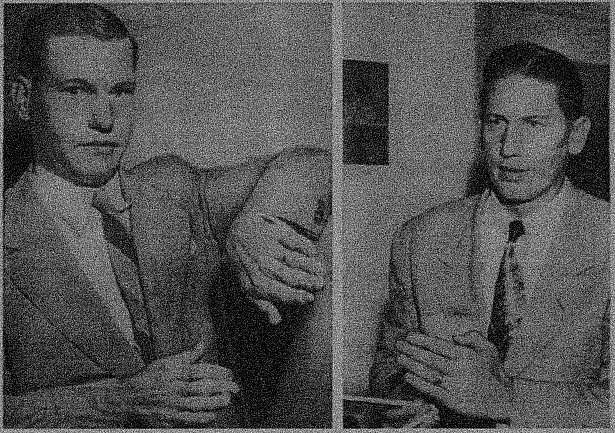
Above: William Fortenberry, left, and William Nash, right, within two days after their reported encounter.
SOMETIMES A STORY tells itself, without need of exposition or explanation. The July 14, 1952 reported sighting of multiple objects by Pan American Airways pilots William B. Nash and William H. Fortenberry is one such... presented here in four parts:
PART ONE: THE PILOTS' TALE AS TOLD BY THE NEWSPAPERS
July 16, 1952
Lowell, Massachusetts Sun - 16 Jul 52
Two Veteran Pilots See Flying Saucers Over Virginia
Claim Objects Maneuver Too Sharply For Endurance by Human Beings
MIAMI, Fla. July 16-- Two veteran airline pilots added to the flying saucer lore Wednesday accounts of seeing eight huge discs zipping in formation at supersonic speed near Norfolk, Va.
Pilots W.B. Nash, 35, and W.H. Fortenberry, 30, of Pan American Airways, said the "glowing orange-red" saucers maneuvered too sharply for human endurance at a speed of "far above 1,000 miles per hour."
"Whoever was in those things," the pilots declared, "had capacities far beyond our own. Those things absolutely did not contain any human beings as we know them."
Major Problem
While Nash and Fortenberry were referring to the "centrifugal force" of turns at such speeds, reports of the Navy's tests with its refrigerated "skyrocket" disclosed another major problem is heat generated by friction with the air.
The tiny plane being used for research on the problems of high speed flight at Edwards Air Force base, Calif., carries enough refrigeration for a good-sized auditorium. In an alleged unintentional "leak" an Air Force officer mentioned a skyrocket speed of 1300 miles an hour.
Nash and Fortenberry said they were flying their DC-4 with 10 company officials aboard southward between Newport News, Va., and Norfolk night before last when six of the saucers appeared 6000 feet below them.
In Echelon
First they flew in an echelon formation -- a diagonal straight line -- at about 2,000 feet altitude Nash said. As the DC-4 passed over them, he said, they turned sharply westward and were joined by two other discs. He said the eight "saucers" zoomed upward to an estimated 10,000 feet altitude.
Nash estimated they "watched the whole maneuver" for between 10 and 12 seconds" before the glowing light "pulsated off" and the "things" disappeared into the sky.
"Giving consideration to the difference in our altitude and theirs we judged they were approximately 100 feet in diameter and between 10 and 15 feet thick," Nash said. "As they neared us they appeared to be solid bodies of light, but they had definite outlines."
Nash and Fortenberry, who immediately reported to airlines and military officials on landing here, said others aboard were seated in the wrong part of the plane "to see them at the angle we did."
"If either of us had seen the things alone," Nash said, "we would have hesitated to tell anyone about it, but we watched the whole thing together." He said visibility was "excellent."
Santos Ceyanes, acting operations manager for Pan American here, said the discs "obviously were not figments of their!
imagination."
Nash, a Navy transport pilot during World War II, and veteran of 20,000 flying hours, and Fortenberry, a former Navy fighter pilot, said they had never seen saucers before.
Miami, Florida News - 16 Jul 52
'Saucers' From The World Beyond Two Pilots Tell Military Authorities
By Bill Baggs
Miami Daily News Columnist
Two Miami airline pilots who reported seeing eight "flying saucers" in formation last Sunday night were quizzed at length by special military officers and civilian authorities.
And the two pilots were pledged to secrecy insofar as the military's interest in the matter was concerned.
The two fliers, William B. Nash and William H. Fortenberry, would not comment except to confirm they had been interrogated by the military.
But, it was learned, the interrogation was not at all casual. It was a serious, lengthy period of questioning in which the two pilots were prodded to remember all particulars, no matter how slight.
Nash and Fortenberry, who fly for Pan American World Airways, are the latest airline pilots to report seeing a glimpse of the teasing mystery. Their testimony details in some respects with the testimony of several others questioned by The Daily news during the past two years.
For instance, other pilots and a Pennsylvania doctor told this newspaper the "saucers" were brilliant in color, and traveled at a great speed, slowing suddenly and abruptly turning in a motion which known aircraft cannot imitate.
Questions and answers put to Fortenberry, a pilot for 10 years, were as follows:
Q. "When did you see the "saucer?"
A. It was last Sunday night, at 8:10 p.m., Eastern Standard time. We were on a routine flight south, and just north of Norfolk, Va., we, Pilot Nash and I, saw several brilliant moving lights. The lights were too brilliant to be those of a city or a ground light. We were flying at 8,000 feet.
Q. What was the behavior of these lights?
A. The lights came at us very rapidly. They were in formation. They were coming directly at us, from in front and slightly to the right of us. We jumped from our seats. The plane was on automatic pilot. And as the lights neared us, they slowed, and the lights faded, and they turned 90 degrees, abruptly, and moved out and away from us to the right.
It was at this point that Fortenberry offered the idea that he thought these "saucers" were something from another body in the universe. he based this notion on the knowledge that the human body could not have endured the sharp turn the "sauces" made just before reaching the airliner. The human blacks out when traveling at high speeds and making a sharp turn.
Q. How fast were these "saucers" going?
A. Pilot Nash and I estimated they were traveling in excess of 1,000 miles an hour. The rate of closure was very great and we were only going about 200 miles an hour.
Q. What color were the lights?
A. We both thought they were yellowish-red, from red to amber.
Q. You saw eight in all?
A. Yes. There were about six which came toward us, slowed and then turned away, and as they turned, two more shot out past our right wing, and ran away to join the other six. These two were very brilliant and were also going at a great rate of speed.
Q. Could you describe the shape?
A. They were disc-shaped. And I thought flat. They had a definite shape. There were no blurred edges.
Q. You said the turn made just before they reached you was severe?
A. Yes, very severe. They came at a great rate of speed, and slowed slightly, and then just turned. It was like a bullet hitting a piece of steel and then taking a sharp reflection off it.
From what the pilots saw, they figured the brilliant light must be connected with the propulsion of the "saucers." When traveling at the fastest rate, the light was very bright. It faded as the saucer went into the turn, and became brilliant as the saucer picked up great speed again and ran away.
PART TWO: THE PILOTS' TALE AS TOLD BY AIR FORCE FILES
July, 1952
NBR 59 AIR 29 16 JULY 1952
C1
DE JEPHQ SIC
P 160653Z
FM HQ USAF WASH 25 DC
TO JEDEN/CGAIRDEFCOM ENT AFB COLO
JEDWP/CG AMC WRIGHT-PATTERSON AFB OHIO
JEPLG/CG TAC LANLEY AFB VA
/C O N F I D E N T I A L/ROM AFOIN 53722 CRYPTOPRECAUTION APPLIES
FOLLOWING CABLE FROM 7TH DIS OSI (IG) MACDILL AFB FLA IS QUOTE:
FOR YOUR INFORMATION. QUOTE-EIGHT UNIDENTIFIED LUMINOUS CIRCULAR OBJECTS FLYING IN FORMTION. VICINITY LANGLEY AFB VA SIGHTED BY CAPT FRANK KOEPKE PILOT PAN AMERICAN AIRWAYS WHILE ON NEW YORK-SAN JUAN FLIGHT. OBJECTS SIGHTED 14 JULY 52, AT APPROX 2100 HRS. WITNESSED BY W B NASH, CO-PILOT AND BILL FRONTENBERY, ENGINEER. CREW MEMBERS STATED CIRCULAR OBJECTS TURNED TO AVOID COLLISION WITH AIRLINER. ESTIMATED SPEED 1-THOUSAND MILES PER HOUR. CREW MEMBERS BEING INTERVIEWED BY OSI AT MIAMI, FLA
16/1403Z JULY JEZPHR
AIR INTELLIGENCE
INFORMATION REPORT
SUBJECT
Sighting of Unconventional Aircraft
AREA REPORTED ON
Chesapeake Bay
FROM (Agency)
Wing Intelligence Office, 435th Troop Carrier Wing (W), MIA, Miami, Fla.
DATE OF REPORT
15 July 1952
DATE OF INFORMATION
14 July 1952
EVALUATION
B-2
PREPARED BY (Officer)
Major John H. Sharpe
SOURCE
PAA Pilots
1. On 15 July 1952, the undersigned, with the local OSI Chief Agent, debriefed two PAA pilots who had sighted a formation of eight (8) unconventional flying objects over Chesapeake Bay near Old Point Comfort on the night of 14 July 1952. The written statement of the two pilots is attached. An overlay showing the path
and direction of the "saucers" is also attached
2. The pilots were W.B. Nash of 400 Ridgewood Road, Biscayne Key, Miami 49, Florida and W.H. Fortenberry of 360 N.W. 130 Street, Miami, Florida, Both men are apparently of high integrity and above average intelligence. Both are pilots of several years experience.
JOHN H. SHARPE
Major, USAF
Wing Intelligence Officer
1. The DC-4 piloted by Nash and Fortenberry was approaching Norfolk, Virginia, about six minutes (20-25 miles) out on the NE leg of the range, at 8,000 feet, when six saucers were first spotted over Hampton Roads or the city of Newport News, approaching the aircraft on a heading of about 60°, at about 2,000 feet. When they reached a point under and slightly to the right of the DC-4, Fortenberry who was in the righthand seat observed them roll up on edge and, not making a turn in an arc, instantly shoot off on a heading of 270°, rolling back to a flat position. This change of direction was made with the suddenness of a bullet ricocheting off a stone wall and was not a turn in the sense that conventional aircraft make a turn. Immediately after the change of direction two more of the discs appeared from behind and to the right of the DC-4 and joined the formation.
2. The speed of the discs was estimated at well over 1,000 mph. When first seen, they were glowing on the top side with an intense amber-red light many times more brilliant than the lights of the cities below, and resembling a glowing red-hot coal. Their diameter was approximately 100 ft. (estimated) and they appeared perfectly circular. They approached the DC-4 in a narrow echelon formation, almost in trail, and appeared to decelerate just before changing direction. With the deceleration was noted a dimming of their intense glow, and immediately after changing direction and flattening out, the glow disappeared entirely. They reappeared at once, glowing brilliantly again, and began climbing on a heading of 270°. Their glow was extinguished again, this time in sequence rather than simultaneously, and they were lost to view.
3. The following impressions were received by Nash and Fortenberry and are of interest:
a. The saucers were in a controlled formation, and during deceleration prior to the change of direction they did not hold perfect formation, but some almost overran the leader. After the turn they were again in good formation.
b. The glow or light on the top surface was related to the power source, since in deceleration the light dimmed, and apparently brightened when power was again applied.
c. Thickness of the objects was estimated at ten to fifteen feet by Nash and at not enough to accommodate a man standing erect, by Fortenberry.
d. The objects did not respond to natural laws, and appeared weightless. They were not affected by gravity or momentum since they changed direction 150° without turning or coming to a stop.
e. No physical characteristics were noticeable except as already mentioned. The light on top of the saucers was internal and not projected, since it was not reflected off the DC-4.
f. The light did not pulse but was steady, and the objects were sharply outlined. There was no corona or hazy periphery surrounding them. The dimming was as if by rheostat, or reduction of power. They also went completely off instantly and instantly reappeared.
g. The objects are definitely not of earthly origin.
COMMENTS of Preparing Officer:
1. The observers are considered reliable, and evidently saw just what they described. The objects were in view for at least five seconds, possibly ten seconds, since Nash saw them approaching, got out of the left seat, crossed to the other side of the cockpit and picked them up again as they completed their turn and watched them disappear.
2. Assuming that they were in view ten miles before the turn and ten miles after the turn and that ten seconds elapsed in this period, the discs covered twenty miles in ten seconds, a speed fantastic to contemplate.
JOHN H. SHARPE
Major, USAF
Wing Intelligence Officer

PART THREE: THE PILOTS' TALE AS TOLD BY DR. DONALD MENZEL
January 13, 1962
HARVARD COLLEGE OBSERVATORY
CAMBRIDGE 38, MASSACHUSETTS
January 13, 1962
William B. Nash, Capt. PAA
761 Glenridge Road
Key Biscayne
Miami 49, Florida
Dar Capt. Nash:
I am really very appreciative of your thoughtful letter of January 13. I am sincerely trying to get to the root of these sightings. And, though I originally had doubts and still do in special cases, I have none whatever concerning the sincerity of the majority of members of NICAP, including yourself, Dr. Maney, and Richard Hall. Perhaps you will be good enough to let me explain my position, which I think is that of the average scientist as well as the present position of the Air Force, so that we may understand one another better.
I suppose that I cannot disabuse you of your belief that I am really not sincere. You are not the first person to imply that I am simply a stooge, cooperating with the Air Force in an endeavor to supress [sic] information about flying saucers. In this you, in common with many others, are subscribing to Keyhoe's nonsense that the Air Force, government officials, and many scientists are conspiring to keep secret incontrovertible evidence that flying saucers are extraterrestrial in origin. At least let me say for the record, whether you believe it or not, that I have never been an official consultant to any government agency on the subject of flying saucers. On two occasions I gave unclassified popular talks, once to the Navy and once to a group at Arlington Hall, Virginia. In these lectures I expressed essentially the opinions given in my book. I have had many problems and difficulties with the Air Force. I am in no sense expressing approval of them or their methods of investigation, especially those conducted under the late E.J. Ruppelt. However, the Air Forces recently opened their files to me without restrictions. At one time they had offered to do so but tried to impose the restrictions of classification on me. This I refused to do. I assume this may be the origin of the statement Keyhoe quoted from CHOP In one of his earlier books that I had not taken advantage of an opportunity offered by the Air Force to inspect their data.
One further point, I am in no sense casting aspersions on the honesty or the competence of airline pilots. ATIC files bulge with reports from pilots, both domestic and military. They constitute beyond question the most reliable data available. ATIC takes the reports seriously and has done an honest if, at times, incompetent job of evaluation. The great bulk of these reports has been solved. In your definition of the word, therefore, they are no longer UFO's. Nonetheless, no matter how experienced these pilots are, we have many examples of pilots who have buzzed mirages or stars, who have reported reflections from ice crystals, balloons and many other natural and terrestrial phenomena. There is no question concerning the proper identification. The reports are completely clear. And again I say that this does not cast doubts on the competence of the pilot or his integrity. But, when we have so much evidence that pilots with every bit as much experience as you have made and can make errors of evaluation of what they have seen, I think I have every right to question your interpretation -- not the observation itself.
Let me put this another way. If a six-year old boy comes to me and tells me that he has seen a dog or a cat out in the yard, I have no thought of questioning him. If he tells me that he has seen a cow, I may be a little skeptical because even the Hollis professor at Harvard University who used to have the right to tether his cow in the Harvard yard, no longer keeps one. I check and find that perhaps he actually did see a cow. A farmer carrying a cow in a trailer was in an auto accident outside. The trailer broke loose and crashed, releasing the cow, which wandered into the yard. Not an impossible explanation at all but a rather rare combination of circumstances.
If the boy reports that he has seen a lion in the yard, I am still more skeptical. First of all I will demand greater proof. However, I do not immediately rush out and notify the police that a lion is loose. I may check the paper to see if the circus is in town, considering that a circus wagon might also have met with an accident, releasing a lion. In any event, it is much more probable that the child has seen an unusually large yellow dog or cat and mistaken it for a lion. Or perhaps it is just one of these large, toy stuffed lions left on the lawn by a neighbor child.
Now, and finally (thank goodness), suppose that the boy reports that he has seen a green lion with two heads out on the lawn. I have to reassure myself concerning the integrity. Perhaps he is simply playing a joke, teasing me. In brief, he would fall in the "hoaxer" class. But if I am satisfied that he must have seen something, I look around for other explanations. I don't suppose that two-headed lions are a downright impossibility. I have seen several two-headed cats in my lifetime, mostly preserved in a bottle filled with formaldehyde and exhibited in a sideshow. They may have been fakes but they looked impressive. Usually nature takes care of each freaks by killing them off at an early age. But I would regard -- and I think you would too -- the report as requiring some further degree of corroboration. Investigation, conceivably, would prove that the boy, looking out through a double storm window, had actually seen a double reflection of a green pillow in the room behind him, the pillow crumpled so that it happened to resemble a lion. Or it may be that a large dog had inadvertently knocked into a ladder and had some green paint spilled on him, and that he was standing, at the moment sighted, beside a large pane of plate glass scheduled to be put in a broken window.
Now, sometimes careful investigation can disclose all of the factors involved. However, it is not always possible to duplicate the exact condition. The green dog may have just been passing through the neighborhood and, for some reason, was never seen again. Of course, if other people have reported a green creature around, that would tend to substantiate the boy's story. But if I can come up with a reasonable explanation or even a possible explanation that is far more probable than that of the green, two-headed lion, I do not have to apologize for having done so. I do not even claim that I have distorted the facts. The boy is quite certain as to what be saw. Even my inability to reconstruct what actually happened does not in itself prove that a green, two-headed lion was running around.
That, Capt. Nash, is precisely the dilemma that faces the scientist today. And, for the record, let me state that, in my opinion, a real, live, green, two-headed lion is far more probable an object than the interplanetary UFO's that you and the NICAP group want us to accept. The responsibility, if any, lies on you to prove that no other explanation is possible. The mere fact that you or others cite that other objects have been seen in the neighborhood about the same time does not prove that the objects sighted are what you claim them to be.
You refer to a TV program on which I was supposed to appear and did not. You imply that I am afraid to face you or other airline pilots. Nonsense! I cannot recall the incident at all.
One more thing, Capt. Nash. You say that I am "pushing my theories." They are more than theories. When I wrote my book on flying saucers I had to use theory, largely, because I did not have access to the ATIC files. However, as a physicist and as an expert in radio propagation, as a naval officer in charge of many aspects of radio communication and radar, and as an expert in meteorological optics I could show that reports similar to those made by the airline pilots have been made for many years.
The nature of many of the phenomena have been known for many years. When I have discussed these with many pilots, both civilian and military, I find that they are completely unaware of the ability of a bright star near the horizon to appear to maneuver. The Air Force was unaware of this. The Air Force scientific advisor was unaware of this. But it has since been definitely demonstrated and proved that this can happen under certain conditions of temperature inversions. I am not saying that what you saw resulted in a temperature inversion. But I am saying, however, that I have more than theory to go on.
Let us return to another point. Of course I do not know what you actually reported to ATIC. All I have to go on is their fairly lengthy and detailed report. I concede that inconsistencies may arise because of inadequacy of transcription. I have myself been frustrated from time to time by a gap in the ATIC reports, some of them resulting from inadequate questioning. For example, when they asked the question "What Is the bearing of the UFO?" the reply may refer to the direction of the UFO as seen by the observer. Or it may refer to the observer's estimate of the course of the UFO. These are two quite different things.
Be that as it may, I welcome the opportunity to ask you a few more specific questions. Perhaps I am not quite as naive as you suspect. I had even gone to the length of getting a photograph of the inside of a cockpit in a DC4, in order to judge the configuration of the windows.
Here is a point of sharp disagreement. I agree that you can estimate angular spread and angular speed. This is equivalent to your statement that they would approximate the size (angular) of a DC3 or a DC4 at 2,000 feet. This means that they were a little more than a quarter of a degree in diameter, something less than half the diameter of the full moon.
Now, if you know the distance, you can get the true size. Or, if you know the true size, you can get the distance. But -- and this is the point that I tried to make in my previous note -- no one can possibly determine the distance of an object of unknown size if it lies beyond approximately 300 feet. With a single eye you can't do anywhere nearly that well. Try closing one eye, partially flex your arms, and try to bring the little finger of one hand against the pointer finger of the other. Ability to judge distance depends upon binocular vision. The distance between two eyes is two and one-half inches. At 300 feet, the two eyes subtend an angle of approximately one fortieth of a degree. In fact, most people cannot judge distances accurately beyond 100 feet.
Of course, as I look up the street, the situation is much different. I can see that automobiles are nearer than the building at the corner, which is probably 600 feet away. Part of this judgment is due to the fact that I subconsciously make allowance for the size of an automobile. And part of it is due to the fact that I can see the object between me and the more-distant corner.
Things are different, on the other hand, up in the air. Against either the sky or the ground, tests have clearly shown that it is indeed impossible for anyone -- not even you, sir -- to make accurate estimates. And when you state that a pilot cannot judge something (even an unfamiliar something) that is halfway between his plane and the ground, you are talking absolute nonsense. And I don't care how experienced a pilot you are. I do not mean this unkindly or critically. This is just a well-known statement of scientific fact. A known object, yes. For then you can estimate from the angular spread how far it is. But an unknown object, no. In darkness or semi-darkness the ability to judge is even less.
Now, let me make a second observation about reflections. Your comments about the similarity of visibility through the several different windows of the cockpit, including the curved section, may possibly -- though not necessarily -- destroy my reflection theory. However, by raising this point, I obtained an important and significant additional bit of information. This should have been in the original report. This is not your fault as much as that of the Air Force, for failing to ask the proper kinds of questions. Only recently has the Air Force gotten around to asking the right questions under different kinds of circumstances. An unusual type of reflection would have been required, to account for this type of motion. The "instantaneous" reversal -- like a ricochet --strongly suggests the reflection hypothesis. For only a reflection is not responsible to the laws of physics such as inertia. Now I realize that the flying saucer believers have tried to promote the idea that, somehow or other, mysterious and very advanced scientists have found a way of making themselves immune to accelerations of 500 or 1,OOO G's. This is something I don't believe. The reflection, I would conclude, if it was a reflection, was of some illuminated object outside of the plane. Otherwise, it would not have moved in the way it did.
I accept your correction about the Western horizon. There may have been some obscuring clouds but twilight was not yet officially over. If you find me frustrating to deal with, it is certainly not because I am willing to credit observers other than scientists with sense. I am merely trying to find out some of the basic details that did not appear in either the ATIC files or in your TRUE article. (At this moment I do not have either of them here at my office, while I am dictating, and some of the questions I am about to ask you may be redundant). But it was never clear to me, until now, although perhaps it should have been, that you saw the objects out of the right window. I do not agree with you, however, that you should have been relieved from the necessity of checking on reflections. You should have at least mentioned some of these basic data. These are the frustrating facts that we who attempt to evaluate the sightings have to go through. Much of the really valuable data are lost and irretrievable. But let me say this in your somewhat agitated protestation that "we know damned well that the brilliant objects we saw were none of your reflections." Reflections, per se, cannot be distinguished from real objects. They look like, move like, and have the basic characteristics of real objects except where there is a change of aspect between the object itself and the mirror or reflecting glass. In brilliant daylight, of course, where you see a reflection, it is likely to have a hazy, transparent quality. But at night this is not true. I think you need to elaborate further as to why this could not have been a reflection from some bright object or objects on the left-side of the plane. Also, I have been trying to find out one further point and thus far have had no direct answer. Although I have a photograph of the cockpit of a DC4, I am not sure whether the side windows are vertical or not. I have the impression that they are all inclined, so that the lower edge is farther from the center of the cockpit than the upper.
I have already taken much too long on this letter, but, you see, I am trying to be honest and direct. Will you please give me again, if you will, the bearing of your craft at the time of the sighting and its ground and air speed. Will you please indicate the bearing on which you first saw these objects and the angular altitude below or above the horizon. Will you please indicate which window you saw these from initially. Will you please indicate which window you were looking through when you saw them apparently reverse. Will you then indicate what window you saw them disappear from, and where you were standing in the cockpit. Will you indicate the bearing on which they disappeared. Will you tell me whether these appeared to get bigger and bigger as they came in and smaller and smaller as they disappeared. You have placed a great deal on their flipping on edge but I am still not quite clear as to what happened at the end of the flight, or the beginning.
I should like to have an objective statement from you, since you emphasize this point. Will you tell me if you were a believer in flying saucers from outer space prior to this sighting? At what time did you change your opinion if you ware not? Were you actually looking for flying saucers and discussing them with Fortenberry shortly before you made your observation? Does Fortenberry agree with your conclusion that these sightings were of interplanetary craft?
I am further aware of the fact that a few people in the Air Force, notably Al Chop -- who has admitted to me that he was not in a position himself to evaluate the sightings -- said some derogatory things concerning my book. So did Ruppelt, for whom I have had little respect. But that is not the reason why. It is because of his very bad management of the whole UFO business.
The reason why we still have the dregs of unsolved cases is due to the bad questioning of the pilots by irresponsible groups at ATIC at the height of the "visitation." This is evidence of the incompetence of the group at that time. But the group now in charge at ATIC are doing a really good scientific job. And one by one, to some extent with my help, the classic cases are being resolved. You, perhaps like myself, are somewhat committed. Yon have made public statements, as have I. I claim that my mind is much more open than yours or anyone from NICAP that I have heard from to date.
You define UFO, as I indicated, in a rather special way, so that an object is no longer a UFO unless it is an unknown. But I have seen UFO after UFO -- some the old classics and some that might well have become classics –- and some that resemble closely the unsolved classics where basic data are missing, many of them reported by reliable airline pilots, civilian, commercial, and military. I do not believe in the infallibility of the airline pilot. I have seen too many reports where an airline pilot has pulled his plane up to try to avoid a meteor that actually was 200 miles away from him at the time. I think that the trouble with the NICAP viewpoint is the influence that Keyhoe and his books have wielded on their minds. Certainly Keyhoe will never settle for anything less than completely censuring the Air Force and receiving from them acknowledgment that his position, which he has stoutly maintained from the start, that flying saucers are from outer space. You notice that I used the words "flying saucers from outer space" rather than UFOs. I frankly prefer the NICAP term "aerial phenomena," which does not beg the question. UFO implies the existence of a material object. In many cases, as we have demonstrated clearly, no material object is involved, at least any nearby material object. A mirage of Venus, Jupiter, or Sirius actually results from light originating in a material object far away. But it does not mean that the object is within our own atmosphere, as the adjective "flying" implies. In fact, this particular definition implies the bias that Ruppelt had toward the flying saucers from space and the interplanetary solution, when he coined it. It also shows that, despite some disclaimers to the contrary, that he and his group were not aware of the major reflection hypothesis that I have proposed.
I am sending copies of this letter to Richard Hall and Charles Maney, both of whom I have come to respect, even though I do not agree with their views. Maney himself has indicated that these cannot be handled on a scientific basis. I think that a certain amount of "will to believe" is involved. However, I do not believe -- alas -- that there is any super-human or really intelligent life in our solar system. I do subscribe to the view that there may be intelligent life in many places in the universe. But, as an astronomer, I am aware -- more aware than most -- of the vastness of space, the amount of fuel that would be required, the enormous climbs that would be necessary, if true interplanetary exploration from stars other than our sun were to come about. Now don't just say, "Here is a man who is limited in his present-day knowledge. There have been many great inventions and perhaps someone will find a way of getting around these difficulties." I am aware of all of these possibilities and still feel that, no matter how intelligent or advanced a race may be, they are not likely to be visiting around the earth. And remember that you are arguing that the visitations consist of thousands of cases, and yet no evidence -- I hope you do not subscribe to the reliability of the contactees -- that a single one has actually landed.
Please believe me, Capt. Nash, that I am writing this long letter without rancor, despite the obvious angry flashes in your own letter. My opinion of airline pilots has neither gone up nor down as the result of these sightings, and I certainly fly enough, for someone who does not hold a pilot's license. I can fly a plane and have flown a plane on many occasions, with proper supervision, of course. But most of my flying is commercial, some of it with PAA. I average about 75,000 miles a year, which is small compared with what a pilot covers. But I do manage to keep my eyes open. I have spent many hours in the pilot's cabin. I have seen flying saucers that matched many of the classic cases. I have resolved what they were. I have based my resolution on my scientific knowledge. There is no question about the correctness of my observations and the Air Force has accepted them absolutely. I say this to show that I am not just an arm-chair theorist.
I am tentatively scheduled to fly PAA from Mexico City to Caracas on March 18, returning to New York on March 24. If I should have the good fortune to have you as my pilot, I will fly with complete confidence and hope that we might have a chance to talk. I, for one, would welcome the opportunity.
And please forgive me for the uncalled-for and certainly unwarranted remark concerning the unavailability of the Captain.
Sincerely yours,
Donald H. Menzel
Director
DHM:gq
CC: Richard Hall
Charles Maney
BC: Major Coleman
Major Friend
L. Boyd
PART FOUR: THE PILOTS' TALE AS TOLD BY WILLIAM B. NASH
February 5, 1962
761 Glenridge Rd.
Key Biscayne
Miami 49, Florida
February 5, 1962
Doctor Donald H. Menzel
Director
Harvard College Observatory
Cambridge 38, Massachusetts
Dear Doctor Menzel:
Please forgive the time element between your first letter and this answer. I have been flying heavily. In addition, as I mentioned before, flying is not my only current responsibility.
Thank you for taking the time from your own busy schedule to write a nine page letter.
I have a great respect for your intelligence and your extensive work in various fields. Therefore I believe that this regular work requires too much of your time for you to bother to debate with Doctor Maney and me without good reason. In spite of your denials, I think there is sufficient evidence right in your own recent letters to strongly indicate that you have been asked by A.T.I.C. to help them get rid of the "unexplainable" before the Congressional hearings begin. The following, I took directly from your letters, and is strongly indicative that you are now, even if never before, aiding the Air Force in its debunking campaign.
1. Your "recent" access to all A.F. files.
2. Your debunking of Project Bluebook (They didn't agree with you, so you didn't like them). Your praise of the current A.F. staff, probably because they, in grasping at straws rather desperately, have come to you for help.
3. Your casual inquiry in a letter to Dr. Maney - "By the way, how are the plans for the Congressional hearing progressing?"
4. You explain your position as that of the position of the Air Force.
5. Your definite statement that the A.F. did not silence Capt. Killian. How could you know if not closely associated with the A.F.? You said, "I can say authoritatively that they (A.F.) did nothing of the sort." (Silence Killian).
6. You say " - and one by one, to some extent with my help, the classic cases are being resolved."
You claim that you have never been an official consultant of the government on U.F.O.'s. That could be devious wording. You have worked with the government in other fields, no doubt in an "official" capacity. This U.F.O. business could be a little extra job they tossed in unofficially.
It is not nonsense, as you claim it to be, that the government, through its assigned investigative departments on the subject, is attempting to keep secret strong evidence that a percentage of U.F.O.s are probably extraterrestrial in origin. It may be true that they have no incontrovertible evidence, as you express it, which wording would also just be devious. This type of wording is the same trick used by the Air Force when they say, "There is no such thing as a "flying saucer" - meaning literally, a saucer that goes with a cup. Even this can be disputed by husbands with violent wives, and we have plenty of saucers in our aircraft galleys.
You apparently respect the opinions of scientists only; therefore what have you to say about the positive report, created by scientists at A.F. request, which expressed the opinion that incredible as it may seem, some of the U.F.O.'s must be of interplanetary origin? This report was mentioned in Capt. Ruppelt's book, and it did or does exist. A prominent Washington Columnist saw this report, along with other news men who were called in to see it. They wrote about it, quoting from it. I have one of the clippings. Also a personal letter to me from this columnist tells me that he, in fact, saw this report, and that the reporters had received a promise of more detail from it later. Then suddenly, he said, we were not allowed this follow-up, in spite of the persistent efforts on our part. He told me he thought that the approaching elections (Presidential) might have caused them to withdraw - that perhaps no department in Wash. wanted to make any moves it didn't have to make until after elections. Well, where is that report from the science group now? Why has it been kept from the American public? Can you deny that it has? If it hasn't, please show me a copy. Otherwise you must admit, without dancing all around Cobb's corner, that it has been kept secret. A fact is a fact, especially to a scientist.
You claim that the great bulk of pilot reports have been solved. Solved to the satisfaction of whom? If much of the A.F. investigation has been as incompetent as you say, then it follows that many of the conclusions are invalid - as a result of this incompetence. Are you going over again, all of these incompetent reports?
You speak of burden of proof. When a "solution" to a sighting is neatly written down and shelved with a sigh of relief, who has proved that a pilot saw reflection from an ice crystal formation or in his windows or that he saw some other natural phenomena? Who has photographed this deceptive image as proof? Has the A.F. caught any of the "meteors" which pilots have seen climb up out of sight in the sky after zooming the Earth's surface? Where is the evidence to prove that the objects radar sets, military pilots and airline pilots saw over Washington for 6-1/2 hours one night and 2-1/2 hours another were not solid objects? Where is the proof that all of the people in the Mantell case were suddenly attracted by a "sun-dog", or Venus? It seems to me that the "solutions" are on rather shaky ground. Proof is a word requiring complete definition. The opposite parties should agree on what is proof. Does proof mean that to be convinced of an object's existence we must touch it? Then who has touched Venus lately? Does proof recognize that all men are not liars, and that some can report fairly accurately what they see? The "burden" of proof does not only rest on the person or persons reporting the experience. It also rests heavily on those who are attempting to shelve the reports and who claim, in writing, to have solved so many cases. If the "solved" reports are so "clear", as you say, why doesn't the A.F. publish all of the reports, at cost, through the department of public documents? Can you give me a good reason why not after so many requests?
I am aware that you are an expert in many fields of physics, and I do not at all discredit your ability, but I do feel that one must stretch things quite a bit to agree with some of your explanations. The original observer had had the distinct advantage of "being there", and even with your ability as an expert in certain sciences, that leaves you in the lesser position of bing a "Monday morning quarterback".
The burden of proof is on you, Doctor Menzel, if you elect to disprove, and how many times have you "overwhelmed" anyone as you say, with provable evidence that a well documented sighting was, without doubt, reflections, sun-dogs, mirages or hot air layers over the Pentagon?
In my records, I note that book reviewer Whitney Bolton of the Buffalo Evening News, 3/9/53, says of your book " - is foggy with evasions and ignoring demonstratable facts".
Published in a national magazine, during an interview, Major General John A. Samford, Chief of Air Force Intelligence, said about your book, "The Air Force cannot yet accept it as a satisfactory explanation. Furthermore, it would not account for all reports by any means".
An Air Force major, in briefing a Reserve Air Officer group on U.F.O.'s said of your book, "It is beautifully written, but the Air Force doesn't think anything of it."
My records show that a project Bluebook spokesman, when questioned about your book said, "These explanations were known the project and carefully considered, even before Menzel published his theories. They explain only a small percent of the sightings". "...At the request of A.T.I.C., prominent scientists analyzed Menzel's claims. None of them accepted his answers."
A.T.I.C. said about one your explanations: - "The electronic or visual mirage of meteorological phenomena is out of the question as the radar set was on high beam and both would not occur simultaneously in the same place."
In your long explanation of how you interpret that which someone else saw, thank you for comparing us all to six year old boys while allowing yourself the luxury of retaining your own identity, age and experience. You do reveal, through your letters, a degree of disdain for those of us who are not scientists. That word "scientist" could stand some definition, too.
Regarding your credulity, suppose, just before the fairly recent catches of the Coelacanth off Africa, a man of intelligence returned from a trip to Africa told you that he had seen a Coelacanth, but that the natives who caught it were hungry and ate it, and he couldn't get it from them because they had big spears. I doubt that you would even have considered the man's story about a fish long thought to be extinct.
Regarding the television program on which you did not appear, I was contacted in Miami by Frank Edwards and asked to appear, with Major Keyhoe, opposite you and Willy Ley. When I arrived in Washington Frank Edwards advised me that you had decided not to take part, and that Jonathan Leonard, Science Editor of Time Magazine was taking your place.
I have letters in my possession from Captain W.J. Hull of Capitol Airlines, stating that he had invited you more than once to debate with him on the U.F.O. subject on television or radio. He said you refused. Captain Hull has always been respected as a man of integrity. Incidentally, until he looked deeper into the subject, he had been briefly mesmerized by your book. As the man said, it is well written.
You refer to N.I.C.A.P. as a "biased" group. The following quotes from your letters and writing rather fully prove that you are biased.
1. "In my opinion, a real live green two-headed lion is far more probably an object than the interplanetary U.F.O.s -"
2. "U.F.O.s" (obviously meaning all) "are distorted interpretations of natural phenomena" (that takes in a lot of U.F.O.s!)
3. "No - scientific investigation - is desired at the present time".
4. "1962 will go and so will the year 2000 and 3000 without visitations from space people unless we ourselves go out there and bring them back to earth."
5. The above were from recent letters. In TIME magazine, June 9, 1953, you said "(flying saucers) are as real as rainbows - This science-fiction approach is like explaining lighting by calling it a weapon of Zeus. How simple is this sort of science - and how wrong".
6. In BLUEBOOK Magazine in 1954, in an article titled FLYING SAUCERS ARE THE BUNK!, you wrote "throughout the ages, apparitions have plagued the human race -- and now we are seeing flying saucers!"
7. In a recent letter you also wrote, "We still have the dregs of unsolved cases" (underlining mine).
It would behoove you to clean your own house before calling N.I.C.A.P.'s objective research group "biased".
It seems that you do not agree that Mr. Fortenberry and I could, with our experience, estimate the size of the objects we saw. I suppose that we'll just have to agree to disagree on that point since you were unwilling to concur that 10,000 hours of flying at 7000 or 8000 feet will help pilots' judgement at all regarding objects in the air between the airplanes and the ground. An Air Force Officer (I believe a Major Sharp) who was one of those who interviewed us, agreed that such judgement does develop, and the fact that the objects were between us and the Earth's surface was a major reason for Air Force interest in our sighting.
I do not "suspect that you are naive", as you seem to think. I do suspect that you are very biased, and influenced by a strong desire of the government to explain away the bothersome U.F.O.'s. This approach limits you to an incomplete, therefore unscientific, investigation.
You are quite correct when you say "an unusual type of reflection would have to be required" to explain our sighting. I'd say it would have to be a real original invention. The instantaneous reversal, on which you base much of the strength of your reflection guess, is common in U.F.O. reports from ground reports, and ground and airborne radar observations. Perhaps many flying saucer believers have "tried to promote" (why don't you say, "Have theorized") (You don't like to be considered to be "Pushing" your theories) the idea that this instantaneous reversal indicated that the craft contains a creature which is capable of enduring the "G-forces" involved. I presently agree with you that this is unlikely. However, I do not agree that this is evidence against the extra-terrestrial theory of evidence which supports your reflection theory. Here is why.
Einstein, in his unified field theory, (With which, I realize, he was not yet completely satisfied) says, "Gravity and electro-magnetism are different manifestations of the same thing". If H2O is used as a comparison, we might say, "Ice, water and steam are not the same thing, but they are different manifestations of the same thing.
Well, first man knew water, ice and steam in natural states; later he learned to create steam from water. Much later, relatively, he learned to create ice from water. Presently we know and use electromagnetism. If Einstein is right (and he's been pretty right in his career) someday we may learn to create gravity from electromagnetism. Perhaps creatures from another planet have already done so. Perhaps they even skipped our known methods of flight such as lighter-than-air, airscrew with airfoil, jet with airfoil, and rocket propulsion. It could be why they are so frequently reported following behind our aircraft - perhaps to learn what keeps the silly things in the air.
Gravity, as far as we know, affects all material in the universe. Hold anything, even a human, over the edge of a cliff and let go. The force we call gravity pulls it. If a strange race has learned to create its own gravity within a space craft, and control it directionally, then it is not inconceivable that they could change direction without radius, or make instantaneous reversals without the occupants experiencing any sensation at all, for they would be pulled with the ship with a common force. Gravity evidently works as the fundamental building block of the universe, of which everything seems to consist - even humans. (It has been suggested by the Italian physicist Bruno Pontecorvo, who unfortunately defected to Russia, and Yale's Dr. Hung-Lee Chiu that the basic stuff of the universe might be the neutrinos. I see that Brookhaven National Lab is presently attempting to study and perhaps trap neutrinos.) I don't think occupants of these strange craft would make such violent direction changes if to do so was a discomfort, and I presently don't believe, as you don't, that they are immune to "G-forces".
Please note that I say "presently" about my beliefs. All one can have in such an unknown subject are current beliefs. It is un-scientific, egotistical and limiting to form firm conclusions without incontrovertible evidence. I also believe that there are no "experts" on U.F.O.'s in existence -- only persons who have kept themselves better informed than others because of their interest in the subject.
Incidentally, while on the subject of the propulsion of the interplanetary or interstellar UFO's - if it were true that they used strong electromagnetic forces to create gravitational propulsion, it might be true that a by-product of the electromagnetic forces might be the visible ionization of the air immediately about the surface of the craft. Various degrees of power applied (hence changes in ionization) might change the amount of air visibly glowing in an ionized state. This could explain the apparent changes in shape sometimes reported, and also the changes in color. Ionization of gasses has been accomplished in laboratories in bell jars, and the gasses glow brightly. As we all know, air is also a combination of gasses.
I have a question. Is it possible for a heavy layer of ionized air immediately around a fast moving craft to protect a metal skin of a craft from friction – with the ionized air taking the brunt of the friction? This, I have just conjectured about, but am not sufficiently acquainted with the properties of ionized air to feel too strongly about it.
To carry it further, photos at night of odd fast lights aloft, and oral reports, frequently indicate a fine round leading edge, and a tattered trailing edge. One photo (I don't have it) even showed a fine connecting line of light between a series of ever-decreasing bulges – like a long nerve ganglion. Would this possibly indicate a gradual collapse of the air ionized by the craft? I ask this because I felt that a bubble of ionized air, left behind, would be of a single electronic charge which would resist collapse by a series of expansions before fading away to complete discharge, "Like" charges repel and if this resulted in such a cushioned deterioration (unlike the sonic boom) it might explain the "silence." of these craft. This silence may be quite accidental, a mere by-product of the propulsion power-sources. If the occupants are as anti-social as they seem, the illumination of the craft also could be a by-product – and perhaps undesired by them. It is to be noted that daylight reports do not report changes in shape.
You see, Doctor Menzel, reflections, mirages, and other such unsubstantial things are not the only guesses one can make to explain the reversals, speed, illumination, and silence of the UFO's.
Now I shall try to answer your specific questions:
1. The side window of a DC4 is inclined approximately 10 degrees, with the top nearest the aircraft centerline. (I believe you intend to get even more complex with your reflection theory. I can almost see it coming – that you are about to try a reflection explanation through three windows now, including a curved one. You'd better work on a four window theory then; - see #5, below.)
2. Our compass course was 200 degrees magnetic.
3. The exact ground speed and air speed, I don't recall. It has been almost ten years, and I don't have it recorded, but a DC4 averages 185 knots. We used the ground speed we were making (we had kept accurate track of it) to compute our exact position at 8:12 P.M., after overheading Norfolk VAM Range not much later.
4. The objects seemed to appear first, in place, about 10 miles beyond Newport News and Cumberland on an approximate bearing of 30 degrees to the right of our heading. They seemed to be low enough at that time to have been almost on the ground.
5. Initially, I saw them from my front window, and Bill Fortenberry saw them from his front window. (two distinctly different angles of flat, minimum-distortion, aircraft glass) This means that I saw them through four different panes of glass of very different angles, and Bill Fortenberry saw them through at least two different panes of glass – possibly three, if he also observed them through the corner curved window as I did.
6. Bill and I were both looking through the right hand side window at the time of reverse. (I, somewhat late at the scene -- Bill with a full, complete, and continuous view.)
7. We watched them disappear as we looked through the right side window.
8. My seat was already back a bit. (It's comfortable that way) It was easy to step into the aisle between the seats and lean over Bill to continue watching.
9. The departure track of the objects was about 20 degrees to the right (more westerly) of their approach track.
10. At the end of the flight, they recrossed our "line" thru the city areas, seemed to travel about ten miles beyond that, then angled upward sharply. As they climbed, they oscillated up and down behind one another in an irregular fashion, as though they were extremely sensitive to control. In doing this, they went vertically past one another, bobbing up and down. (just as the front three went horizontally past one another, as the initial six approached us. This appeared to be an intelligence error – "lousing up the formation") When they arrived at a high altitude, we were looking well up at them, even though they seemed to be horizontally quite distant. (Judged from speed and perspective diminishment) We didn't venture a guess as to their height, but they disappeared by blinking out in a mixed up fashion, in no particular order. Some persons have suggested they were entering a carrier – or getting behind clouds. We never ventured a guess. However, they had blinked out before, just after the reversal, and after two more came from beneath our right wing to join the original six. The lights were out about one second. They seemed to dim just before the reversal, and brighten right afterward. The color, in quality, was not lense-like [sic], phosphorescent, or at all fuzzy, but appeared to have depth, as in the appearance of a hot coal. They were bright red, somewhat toward orange or amber. The edges of the coin-shaped objects were distinct and well-defined: not fuzzy in the least. Artista, drawing sketches for T.V. appearances wanted to elaborate and draw cabins, port holes and such, but Bill and I refused to appear if any such illustrations were used.
11. Yes, they appeared to get bigger and bigger as they got closer, (considerably) and decreased in apparent size as they departed.
You demand further elaboration from me concerning my statement "We know damned well that the brilliant objects we saw were none of your reflections". I offer the above answers to your questions and emphasize the following as evidence against the reflection theory which I consider very weak,
1. The apparent "intelligence error" of the objects sliding past one another as they approached. The objects also passed one another vertically during the climb.
2. The objects blinked off and on after reversal, and blinked off separately, in disorder, at the end of the observed climb.
3. The intense "hot coal-like" brilliance of the objects.
4. The two additional similar discs which came from beneath our right wing to join the original six. These two were not in our sight above the wing as they should have been if they had been reflections.
5. The objects turned on edge and back flat again.
6. One pilot saw the unchanging objects through four glass surfaces. The other saw them through two, perhaps three glass surfaces (The front windshield is V-shaped with two panels).
7. The (at least seven) ground reports of objects similar in shape, color and maneuvers.
8. The same kind of "reflections" were seen over Wash., D.C. visually from ground and air, and by both ground and aircraft radar, and were locked on by aircraft radar, over at least three separate nights, two for hours at a time, within ten days after our sighting.
9. Our extended experiences (far greater than yours, and that of most other scientists) in observing and analyzing actual reflections and natural phenomena, and our Navy training in rapid identification.
10. The fact that the objects were observed between our aircraft and the West.
You ask me if I had been a believer in U.F.O.'S from extra-terrestrial sources before I had this sighting. TRUE Magazine also asked me that, and I told them "yes" - that I gave credence to many of the reports from reliable sources which were then in existence. There was strong evidence, even in 1952, six years after the initial reports had begun, that the interplanetary explanation was a logical one. I realize that to have withheld the fact of my previous interest in U.F.O.'s would have benefitted acceptance of my personal experience in all quarters, and I also am quite sure of the inference you make when you pose this question. However, I feel that the truth is necessary and also that such an interest in U.F.O.'s should not be considered unique in an intelligent society, and an alert society. To fail to give at least some attention to this subject appears to reveal either fear of learning that U.F.O.'s are real, or that the individual has unfortunately lost one of the fundamental human wishes: the desire for new experience. This human wish, as expressed by psychologists, has unfortunately been almost completely obliterated in many of us today by the over-emphasis of another of the human wishes; the desire for security. The complexity of this era causes many persons to erroneously believe that they are behind times, and they feel lost in confusion because they do not understand all that goes on about them. We should realize that we cannot possibly fathom all technical fields, and comfort ourselves with general understanding, except in our own peculiar specializations. However, to assuage the feeling of insecurity, the human unconsciously sets up the defense mechanism of rejecting that which he does not understand. Hence the success of "explanations" for U.F.O.'s. Most people snatch at these with a sigh of relief and say "Ah" "That gets rid of those nasty old flying saucers!" Our Air Force, in suppressing information is helping to drive the people of our nation further into shells of security, when what our people need is a kick in the pants, a few shocks, and the regaining of some of the guts of their forefathers.
Even if the chance that the interplanetary theory is true was a small one, proof of the theory would be the biggest news since B.C. became A.D. How can the subject be ignored - intelligently? Especially how could a pilot ignore it, when he spends so much of his life in the air? The fact that I had previously taken an interest in the subject does not help your case one bit.
No, Bill and I had not discussed flying saucers before the experience we had.
No, we were not looking for flying saucers. However, many other nights, I had cut down the cockpit lights on 8 hour over-water flights, and watched the sky intently. I saw hundreds of meteorites, the northern lights, other aircraft, bright, distorted and multi-colored Venus, and various stars low on the horizon, but in at least five years of such watching, I never saw anything odd that appeared to be intelligently controlled until July 12, 1952 [sic, should probably be July 14, 1952], when I was not watching. It was Bill's first trip on that route, and it was such a clear night that I was taking advantage of it to point out to Bill the various cities and landmarks as we passed them, such as Philadelphia, Washington, and Richmond - and the reason we were both looking at the same spot at the same time was that at that moment I was pointing toward that spot and saying, "There is Newport News and Cumberland".
We were attracted therefore, simultaneously, by the redness of the objects as they seemed to light up, or appear in place, then shoot like small red tracer bullets toward us. When they moved over the bay, they came close enough for us to define their shape and to approximate their rather large size.
To answer your question about whether or not Bill Fortenberry also concluded that the objects were interplanetary craft, I'll quote from a long article published in the Miami Daily News On July 16, 1952.
"It was at this point that Fortenberry offered the idea that he thought these "saucers" were something from another body in the universe".
I currently agree with your view that the U.F.O.'s do not originate within our solar system. In fact, I wrote an article (A feature article with title on the cover) on this thesis for CHALLENGE magazine, May, 1955. I think it more likely that they come from another solar system. I know you are a prominent astrophysicist and you don't agree that this is possible, but many scientists who, of all people, should be open-minded, actually close their minds. Remember it took 200 years to get most scientists to agree with a few, that meteors found on Earth were extraterrestrial - not just Earthly rocks struck by lightning.
J.B.S. Haldene said, "My own suspicion is that the universe is not only queerer than we suppose, but queerer than we can suppose."
Einstein said, "The fairest thing we can experience is the mysteries. It is the fundamental emotion which stands at the oracle of true art and true science. He who knows it not, can no longer feel amazement, is as good as dead, a snuffed-out candle."
Hudson Maxim, in a 1910 issue of an aviation magazine in my possession said, "Bombs from the high air will never be widely destructive, reports from imaginative writers notwithstanding."
How many officials with a "good grasp" of tactics thought General Billy Mitonell was a crackpot many years after the above article in 1910? These officials were sure they were right, as you are sure you are right when you say, (not with modesty) "I have based my resolution on my scientific knowledge. There is no question about the correctness of my observations."
Even though, at present, I give the greater credence to the interstellar U.F.O. origin theory, there are many scientists who concede that life on other planets within our own solar system could most certainly exist, even though it probably is not "life as we know it".
Axel Firsoff, in the British Magazine, DISCOVERY, believes Jupiter could have life based on Ammono-chemistry. Both systems produce well-known compounds, including amino acids of which proteins are built. Instead of oxydizing food to liberate energy as Earth's animals do, Jovian animals would combine it with nitrogen, and the final product would be cyanogen, violently poisonous to us. Such animals could breath nitrogen and drink liquid ammonia.
The study of "exobiology" exists among eminent scientists. The growing of bacteria-like cells from the Murray meteorite of 1930, and the organic compounds found in a 100 year old meteorite from France are both of considerable interest. The scientists do carefully admit, however, that it is difficult to determine whether the meteorite from France was examined in its pristine form, or whether Earth bacteria from the atmosphere or the ground had penetrated it.
We will soon have to broaden our concept of what constitutes a living organism. Life forms faced with different gravities, atmospheres and food sources could well develop very different appearances. We should being to clear our minds of prejudices and preconceptions.
Another thought, Doctor Menzel: "sight" (the only sense involved in your explanations) is not the only sense which has been affected by U.F.O.'s. They have been heard, and smelled (which, to a degree is associated with taste) and have physically disturbed our vehicles and at least the plane of Chiles and Whitted of Eastern Air Lines, which sighting I note you explain away by attributing this to the pilots' imaginations (simultaneous imaginations).
To answer your question, I currently do not give credence to the story of the "contactees", but there are convincing examples of "landed" U.F.O.'s. However, I believe that a sincere, scientific and unbiased investigator cannot ignore any contactee's report. All must be checked. Someday one might be the real thing (the old "cry-wolf" story again). The scoffer would end up looking ridiculous, unscientific and small minded, like the Newspapers who would not print the Wright brothers' successful flight even when their on-the-spot reporters sent them the story.
By the way, here is something I've been trying to learn for years. I wrote to the Harvard Dept of Astrophysics and the Observatory at the time (1948) for further information, but never received the courtesy of an answer.
Perhaps you can tell me the complete story. In 1948, in the NEW YORK TIMES, I saw an article regarding a statement from the Harvard Observatory that there were three "asteroids" as they called them in the paper, circling the Sun in the Earth's orbit. I believe two were reported to be 350,000 miles ahead of the Earth and one was 250,000 miles behind the Earth. In trying to get further details, I was ignored. Can you, as a long time Harvard astrophysicist offer more information on this Harvard observation?
I too, write without rancor, though with some impatience at your single-mindedness. I don't mind a good debate, only I have little time to participate, and I lack an office and a secretary.
It would be a pleasure to have you aboard my aircraft. I think, however, that when I invited you to the cockpit, it would behoove us to avoid this subject until on the ground where we'd have hollering room.
Sincerely yours,
William B. Nash
P.A.A.
EPILOGUE
WILLIAM H. FORTENBERRY, killed November 8, 1957:


FOUR CREW MEMBERS of the airliner missing on flight from San Francisco to Hawaii are stewardesses Yvonne Alexander (upper left) of San Francisco and Marie McGrath of Burlingame; Capt.
H.G. Brown (lower left) of Palo Alto, pilot, and W.H. Fortenberry of Santa Clara, second engineer. There are four others in the crew.
DONALD H. MENZEL, died December 14, 1976:
From Donald Howard Menzel, A Biographical Memoir, published by the National Academy of Sciences...
"Astronomers have always had to contend with astrologers and other charlatans, but after World War II the problem became more severe. Menzel's devastating criticism of Velikovsky's Worlds in Collision in Physics Today provided one of the earliest exposes of this pseudoscientific rubbish. His careful analysis of the UFO phenomenon did much to debunk the claims of visitations by extraterrestrial vehicles."
WILLIAM B. NASH, retired 1977, active author since:
Clipper Pioneers Newsletter, August, 2009
Cold War Airline
Our DC6B Four-Engine Airliner was en route from Frankfurt to Berlin flying the south corridor over East Germany. By radar, electronic navigation, and visual means, we were carefully maintaining the very center of our sensitively restricted route to the divided city.
Without warning we found ourselves surrounded by five Soviet Mikoyan-Gurevich (MIG) tactical fighters, closing in on us in tight formation. I clicked on the auto-pilot. It held a straight course better than any human.
I did not know whether the fighters were flown by Soviets or by Luftstreitkraefte/Luftverteidigung GDR pilots.
Both were forbidden to be in the corridor. These intruders were close and they were sitting on silk. They could bail out in the event of collision. Our crew and passengers could not. The jets on our left moved in close to us, apparently trying to spook us away from them toward the corridor edge - only 12½ miles away. This irked me, so I eased back the throttles and dropped the gear and some flap, and they would wobble and almost stall out trying to fly that slow with jets. This put them in high dudgeon and they gave us a super buzz job, racing close to us from all directions. Eventually they gave up or ran short of fuel and left us.
That was just one of the ways the communists tried to make us give up keeping the Western allied portion of Berlin free. The cold war was still hot. This was the reason for the existence of the Pan American World Airways Internal German Service (IGS).
Berlin, divided into East and West Berlin, controlled by Britain, USA, and France in the Western portion, and the Soviet Union in the Eastern portion, was 192 miles behind the Iron Curtain in the south corridor. However, the communists wanted total control and tried their best to get the Western allies out of Berlin. In the Four Power Agreement the Soviets refused to permit West German Airlines to fly over East Germany to Berlin, so one airline from each of the allied nations provided this service: Air France, British European Airways (BEA) and Pan American World Airways (Pan Am) for West Berlin; the Soviet Aeroflot Airline served East Berlin's Schonefeld airport from other cities behind the Iron Curtain.
Our three "air tunnels" (corridors) from West Germany to Berlin had roofs of 10,000 feet flight level, floors of 3000 feet, and were 25 miles wide. Frankfurt, Hannover, and Hamburg were the first destinations at the Western ends. If we ventured out of a corridor, the communist interceptors could force us to land in East Germany - or worse, use us for targets if we did not comply. An Air France airliner, barely out of the north corridor , was shot down and fell inside the corridor. Air France eventually quit flying the corridors. BEA and Pan Am
continued.
The communists would attempt to disrupt our communications and radio navigation sources by broadcasting high volume noise, sounding like eight bars of discordant clarinet practice, blotting out and making our frequencies unusable. They wanted us to wander out of the corridors.
Sometimes they would shoot high flares up all across the corridors. Had one ever hit us, it would have stuck to the airplane skin and burned us. They were magnesium flares and burned hot enough to set us afire. We would have to turn back. I transferred from Miami to the Internal German Service in 1962. I was a widower with three young children and my mother in the household, and they were all eager to go to Germany with me. They were to join me as soon as I had found a suitable home for us. So for the time being I preceded them to become established in the new flying area and to find a home. World War II had beaten up Frankfurt and few undamaged hotels existed. Pan Am paid to rebuild a small hotel in the forest near the airport, called the Unterschweinstiege (translated to mean under the pig sty in Frankfurt dialect) for international crew overnights. It has since grown into a huge 550-room 5-star hotel, renamed Steigenberger, with all modern accommodations. A restaurant in the hotel is still called the Unterschweinstiege. I managed to stay there a couple of nights, then moved from "Under The Pig Sty" to the old Palace Hotel in town. Since the Germany Pan Am base was then Frankfurt, they put me right to work, leaving me not much time to seek housing for the family.
The first morning I reported for a route check, I was early at the airport checking the weather. The check pilot said, "what do you want to do that for? We're going anyway" - and that's the way it was for the next 15 years - lots of instrument flying. We had "look-see" as the only landing minimum. So we always "saw" the approach lights - even if they were under us. Other airlines said Pan Am still flew when the birds were walking. While flying in the IGS I landed at an alternate airport only once.
Our IGS flight crew consisted of 166 pilots and flight engineers, and 109 German stewardesses. Some of jet - the Boeing 727 - a great "schoenes kleines Flugzeug."
The communists continued to harass us in the corridors. At our 500 mph jet speed it would have been easy to slide out of the corridors. We watched our headings even more carefully. On the approach into Tempelhof airport in Berlin, the usual final approach was over East Berlin. Often, at night, the communists aimed a huge powerful spotlight directly at our cockpit to blind us. I would put on dark glasses and look only at the instruments. The copilot wore dark glasses and told me when we were below and abeam the second floor of some apartments close on our right. Touchdown was then imminent.
We still had to maintain between 3,000 and 10,000 feet flight level with the jet in the corridors. Our fuel consumption was high, flying a jet that low, but when we left the corridors at the West German border, we could climb to over 30,000 feet flight level, at which level our jets drank a lot less fuel. These were flights to Düsseldorf, Cologne, Stuttgart, Munich, Nurnberg, or other cities in Europe.
In the meantime, the communists were busy obliterating our radar screens by dropping metallic tinsel from high above us in the corridors.
It was not long after we got the jets that we lost one. It was the nightly mail plane returning to Berlin from Frankfurt in the middle of the night - no passengers on those flights. For some reason that night, Tempelhof was closed and Tegel airport in the French sector was the destination airport. This took the airplane north of its usual track approaching Berlin, and it crashed en route to Tegel airport in communist territory.
The next morning I had a flight and took photos of the crash site, showing digging machinery close to the 727. Parts of the airplane were being pushed into the holes and buried. The only conclusion I could come to was that the communists had shot the plane down and were hiding the parts of the plane which revealed this. I gave my photos to the chief pilot. No one but the communists were permitted at the crash site until the communists had finished hiding the evidence. Our United States Federal Aviation Administration (FAA) investigators were stymied. Years later, in the United States, I met a man at a pilot meeting, who had been one of the FAA investigators.
He told me the photos told the story, but due to our State Department and the resistance of the communists, the investigation was called off. Nothing would be proved. His opinion was definitely that the 727 had been shot down. All that Pan Am got back were the unburied parts of the airplane and the three bodies of the
crew.
I believe that the communists at that remote anti aircraft outpost had never received a message that the mail plane, the only plane in the sky that time of the night, would be over their territory and land at Tegel airport.
News reporters often lurked at both ends of the flights between Berlin and West Germany and would try to collar some of our crew and eagerly ask, "Did anything happen on your flight?" We had all agreed to tell them nothing. They might have started World War III.
My last fifteen years with Pan Am were in Europe, including eleven years on the jet. The flying was unique and precise for me, and great travel for the family. All of us experienced the educational sophistication of visiting many countries and exposure to foreign cultures and languages.
It was a three year assignment. However, we liked Germany and did not return to the USA to live until my retirement in May 1977, after 15 years in the IGS, with two additional family members: a pretty German wife and our four-year-old Berlin-born son, Billy.
- - - - -
Airways Magazine, January, 2011
Pan Am's Flying Boat Pilots
I was hired by Pan Am during the flying boat era and was fortunate to fly with many of the experienced, 'old-timer' pilots. Cockpit techniques were not standardized then, and each of these older pilots had developed his own style and likes and dislikes which we, as junior pilots, had to learn and abide by when we flew with a particular captain. Naturally, we learned a great variety of techniques. We kept small notebooks to remind us what technique went with what captain. I often wondered if we perhaps became more experienced than our captains, because we learned all of their tricks. They knew only their own.
Notes:
1. Selected Air Force documents on the sighting by Nash and Fortenberry can be read here.
2. A letter of reply sent by Menzel to Nash's letter as contained in Project Blue Book files can be read here.
3. Galley proofs as contained in Project Blue Book files from Menzel's 1963 book The World of Flying Saucers discussing the Nash-Fortenberry sighting can be seen here. In the galley proofs Menzel leaves off in his description the report of the lights decelerating and dimming just before their abrupt changes of direction. In addition Menzel misstates the facts when he writes "Intelligence officials first checked the air traffic. Five jets from Langley Air Force Base, near Newport news, had been in the region at the time of the sighting, but they were ruled out as an explanation for the disks." In fact, it had been the Pan American dispatch center in New York which, upon receiving the reports of Nash and Fortenberry, had checked with "Senior Controller ATC" who in turn checked "with Washington. They advised 5 mil jets in area at that time". But further investigation could find no source for the information, and the Air Force determined "through Flt Sv Hq Cln Alfa Norfolk has RPTW no inbound or outbound jets time of sighting and no known local jet traf". Yet Menzel uses that to assert that persons on the ground reported to have seen the objects "mistook the sunset-reddened jet trails for UFOs."
4. The National Academy of Sciences publication Donald Howard Menzel, A Biographical Memoir can be read in full here.
5. In the time when Project Blue Book was at its most active under Capt. Edward J. Ruppelt, Dr. Menzel notably declined to put his theories to the test, as revealed in a prepared written statement from the Air Force given to Major Donald Keyhoe in 1952. The statement, as printed in Keyhoe's book Flying Saucers From Outer Space...
These explanations were known to the Project, and carefully considered, long before Menzel published his theories. They explain only a small per cent of the sightings . . . At the request of ATIC, prominent scientists analyzed Menzel's claims. None of them accepted his answers . . . Dr. Menzel was invited by Project Bluebook to apply his theories to any or all of the unexplained sightings, using Project records cleared for this purpose. He has not availed himself of this offer.
Keyhoe had also submitted a list of questions to the Air Force specifically asking if it accepted Menzel's explanations of three famous cases, to which the Air Force answer to all three was "no". Kehoe had also asked the following question and received the following answer...
Question: "Did Dr. Menzel obtain all available ATIC records in these three cases?" Answer: "He did not obtain this information. In answer to a query, he was offered all Project data on these and other cases, through usual channels. We have heard nothing further from Dr. Menzel in regard to this."
In the above 1962 letter Menzel acknowledged the offer had been made, but claimed...
At one time they had offered to do so but tried to impose the restrictions of classification on me. This I refused to do.
Why the "restrictions of classification" would pose any problem to Menzel -- who had been engaged in highly classified work for the military during the war -- was left unexplained in the letter. And the extent of any such "restrictions" would seem to have been very slight in any case, as it occurred in the same time period as Life reporter Robert Ginna had been given unprecedented access in March, 1952. In addition in summer, 1952, Major Keyhoe -- a well-known advocate not only for the reality of the saucers but of their extraterrestrial source -- was given nearly unfettered access to Blue Book files, from which he not only quoted liberally in his 1953 book Flying Saucers From Outer Space but which included many behind the scenes opinions and activities of Blue Book personnel, including the use of their actual names. This, in combination with Menzel's claim of intolerable "restrictions", makes even more curious the claim by Menzel in his 1953 book Flying Saucers...
Scientists who might have easily provided the key that would unlock the secrets of the saucers did not receive detailed information necessary for a serious study of the whole problem.
6. Menzel's assertion in his letter that the Air Force was somehow unaware of the reflection theories, i.e., "It also shows that, despite some disclaimers to the contrary, that he and his group were not aware of the major reflection hypothesis that I have proposed" does not hold up to even casual scrutiny.
Captain Edward J. Ruppelt, the chief of Project Blue Book in 1952, wrote several times of Menzel's atmospheric mirage theory. In a 1952 article for the classified Air Intelligence Digest Ruppelt wrote...
Reflection and refraction theories as natural explanation of UAO reports are questioned by authorities like Dr. Ronald Ives, the Cornell geophysicist, who is an outstanding authority on mirages. Dr. Ives points out that the reflectivity of temperature disparities in the air is so slight that it reduces the intensity of the light source to a negligible degree -- far less bright than the brilliantly luminous objects that have been so frequently seen.
In May, 1954, after leaving Project Blue Book and returning to civilian life, Ruppelt wrote an article for True magazine, titled What Our Air Force Found Out About Flying Saucers, in which he stated...
Professor Donald H. Menzel, in a book entitled Flying Saucers -- History, Myth, Facts, attempted a single explanation for the stubborn 20 percent of unknowns that the project could not account for. His theory was that "this mysterious residue consists of the rags and tags of meteorological optics, mirages, reflections in mist, refraction and reflections of ice crystals." His explanation failed to account for the many cases where there was a simultaneous radar fix on a UFO and a visual sighting. Mirages and reflections can and do fool the naked eye, but they don't show up simultaneously on a radar scope.
In his 1956 book, The Report on Unidentified Flying Objects, Ruppelt had this to say about Menzel's atmospheric mirage theory...
Periodically throughout the history of the UFO people have come up with widely publicized theories to explain all UFO reports. The one that received the most publicity was the one offered by Dr. Donald Menzel of Harvard University. Dr. Menzel, writing in Time, Look, and later in his Flying Saucers, claimed that all UFO reports could be explained as various types of light phenomena. We studied this theory thoroughly because it did seem to have merit. Project Bear's physicists studied it. ATIC's scientific consultants studied it and discussed it with several leading European physicists whose specialty was atmospheric physics. In general the comments that Project Blue Book received were, "He's given the subject some thought but his explanations are not the panacea."
7. Menzel's statement in his letter that "I have spent many hours in the pilot's cabin. I have seen flying saucers that matched many of the classic cases..." seems hyperbolic and nonsensical on its face. In addition, Menzel fails to provide one specific personal example of such experienced by him which matches even one, let alone "many of the classic cases". And Menzel's statement begs the question as to why, if he had indeed experienced such, that such reports from pilots weren't exponentially more common than the record shows.
8. A video clip of Dr. Menzel demonstrating his saucers-as-light-refraction theory can be seen here.
9. It is interesting and indeed telling that the same letter in which Menzel went to great pains to emphasize "that I have never been an official consultant to any government agency on the subject of flying saucers" he sent blind copies of the letter -- that is, unknown to Nash, the recipient -- to Major Coleman, the public information officer for Blue Book, and Major Friend, the head of Project Blue Book at the time.
10. Nash's reference to a "positive report, created by scientists at A.F. request, which expressed the opinion that incredible as it may seem, some of the U.F.O.'s must be of interplanetary origin" refers to an Estimate of the Situation prepared by the members of Project Sign, the predecessor to Blue Book in 1947. His reference to its suppression due to the upcoming presidential election must then refer to the election of 1948.
11. In reply to Nash's request to Menzel as to the specifics of an article he read in 1948 in the New York Times, i.e., "In 1948, in the NEW YORK TIMES, I saw an article regarding a statement from the Harvard Observatory that there were three "asteroids" as they called them in the paper, circling the Sun in the Earth's orbit", Menzel wrote back "With reference to your final question, there is nothing to support the claim made in the 1948 New York Times that three asteroids are circling the sun in the earth's orbit. It was certainly not a Harvard observation." But despite Menzel's denial, a story in the March 25, 1948 edition of the Pittsburgh Post Gazette related...
New Asteroid is Discovered; Will Near Earth
An announcement from Dr. C.D. Shane, director of Lick observatory, related through the Harvard observatory information service, states that "an object of magnitude 13 with an extraordinary motion" was photographed by the 20-inch astrograph on March 7, 10 and 11. From the positions on these three dates, Dr. Leland E. Cunningham has computed an approximate orbit which indicates the object will be nearest the sun May 21, at which time it will be only 0.9 of the earth's distance from the sun.
Fourth to Wander
Until more is known about it, the body is at present designated as the "Wirtanen object" from the discoverer. It is generally assumed that it is a planetoid or asteroid (little planet) which has strolled inside the orbit of the earth. If this is correct, it is the fourth asteroid known whose orbit loops inside the earth's path. Its rapid motion indicates it is relatively close to us.
Until 1932, no asteroid was known to come as near to the sun as does the earth. That year, the tiny Apollo looped inside even the orbit of Venus and came with 6,500,000 miles of striking us. Then 1936 brought another one, Adonis, almost to Mercury's orbit.
But terrestrial dwellers really became excited in October, 1937, when Hermes moved five degrees across the starry spaces per hour and was found to have passed us at the uncomfortable separation of only 500,000 miles, or twice the moon's distance.
There is positively no need to worry, for astronomers assure us that "No. 4" will not collide with the earth. The probabilities are that only in thousands of years would such a body strike any land surface.
Certainly the specifics did not match Nash's recollection 14 years later, but Menzel as head of Harvard Observatory almost certainly had access to its press releases from that time, or some other source which enabled him to reply so forcefully -- making his reply to Nash seem disingenuous at best.
12. In October, 1952, Nash and Fortenberry would pen an article for True Magazine, entitled "We Flew Above The Flying Saucers", which is available through the "UFO Magazine Articles" section of the Saturday Night Uforia Library.
13. The reference to Menzel and Velikovsky in the booklet published under the auspices of the National Academy of Sciences requires a great deal of background to fully appreciate -- in this case a 9,000-word footnote -- as follows...
- - - - - -
IMMANUEL VELIKOVSKY WAS born in late spring, 1895, to a Jewish family living in one of the areas "permitted to Jews" -- the city of Vitebsk, population approximately 65,000 -- in Tsarist Russia. Velikovsky would write of that time...
The events around the time of my birth were as if symbolic of the trends my life would take. In those days Theodor Herzl started his diary in a hotel room in Paris, having been assigned as a foreign correspondent to the trial of Dreyfuss. Until that spring Herzl, like so many of the Hungarian and Austrian Jews, felt alienated from the Jewish people. Then, while covering the Dreyfuss trial, Herzl experienced in the courtroom something akin to a transfiguration. He began to feel his bonds with his ancient nation, with its judges and prophets, and with the eighty generations of exiles, unbroken by persecution. It was then that he conceived his "mighty dream" and on June 10th, the day of my birth, he wrote in his diary: "I am taking up again the torn thread of the tradition of our people. I am leading it to the Promised Land. Do not think this is a fantasy. I am not an architect of castles in the air. I am building a real house." In Paris he also wrote the first pages of his political manifesto, The Jewish State.
In 1895 Freud, having two years earlier published with Breuer the first paper on psychoanalysis, began to write his Interpretation of Dreams.
In 1895 a new era in science was started by Roentgen with the discovery of X-rays, followed by the detection of radioactivity by Becquerel and of radium by the Curies. The old mechanistic philosophy of the world saw the daybreak of a new understanding of the universe.
Velikovsky's parents embraced the dream of a Jewish homeland as well as the value of formal education for young Immanuel and his elder brothers, Alexander and Daniel. After moving to Moscow when Velikovsky was six, he took private lessons in Hebrew, German and French. His brother Daniel was accepted into a very good private school -- the Medvednikov Gymnasium -- but Velikovsky was not because of the limit of three-percent of the school population being permitted to Jewish enrollment. Velikovsky continued his private lessons in French, adding to it tutelage in Russian and mathematics. Finally he was admitted to the school at the age of 10, and graduated eight years later with honors, having excelled in mathematics, Russian, Latin, history, and literature -- though he was to write "in modern languages I did not excel, neither did I show great interest in natural sciences, if there were any courses in the last grade" .
One year before graduation, at the age of 17, Velikovsky made his first visit to Palestine. The trip involved stops at Vienna and Trieste, then by sea to Port Said and then Beirut, where Velikovsky visited the famed American University. From there Velikovsky traveled to Jaffa, and then to Tel Aviv and Haifa. In all, he would spend five weeks exploring. He launched his return from Alexandria, stopping along the way at Piraeus and Athens, where he climbed the Acropolis, then on to Smyrna where a guide pointed out "where, he said, Troy once stood". Continuing on he visited Istanbul and its famed sites. Finally returning to Russia he crossed the Bosporus, endured a storm in the Black Sea, and landed at Odessa, from which he moved on to Kiev and then home to Moscow. Then the summer after graduating Velikovsky and his brothers toured Finland before Velikovsky entered university.
Deciding to study for a career in medicine, Velikovsky first attended the renowned Université de Montpellier in France. But undoubtedly influenced by news of a new pogram against Jews in Russia -- accused of using gentile blood to make unleavened bread -- it was not to be a long stay...
Back in Montpellier, soon after the classes started, we were unpleasantly impressed by the rigorous discipline and the disrespect shown by the teachers to the pupils in one of the classes -- this was far different from the freedom we had known as students in the universities of Russia. Standing on the platform near my home, from where the aqueduct started, with a bright view stretching in front of us, I suggested to Marek that we not continue the classes but go together to Israel -- to which he gladly agreed. Our friends in the group were impressed by this decision; to us it seemed to be merely the natural and immediate consequence of our Zionist attitude.
Velikovsky and his friend traveled to Marseille, and then by boat to Egypt…
In Cairo we climbed the pyramids, but once again I omitted visiting their interior -- faced with the choice, it appeared more interesting to spend money for the ascent. By boat we came to Jaffa. In Tel-Aviv we received from Bezalel Jaffe, one of the leading citizens and a remote relative of my mother, a letter to Eisenberg, the director of Agudath-Netaim, in Rechoboth. We were seen only by his assistant, and were included in the cadres of plantation workers on a day-to-day basis. We took two rooms in the "colony," as Rehoboth and other settlements were called, and ate in a primitive laborers' kitchen. But of work in the field not much was done: it was the rainy season and during the rain we had to stay home and were not paid. One day we worked at slicing the earth and pulling out the roots of ingil, a strong weed, and my tallness was not an advantage since the work was done in a bending position. Another day we worked in planting. And again ceaseless days of rain. Some days we subsisted on chocolate powder and condensed milk, preparing this drink again and again. In our room, I read Dostoievsky's The Brothers Karamazov and was impressed.
Velikovsky would spend a few more months in Palestine, moving on to other settlements and other work throughout the winter months. In spring he returned to Moscow, contracting diphtheria but recovering. Deciding to return to his education, Velikovsky moved to Scotland...
In the spring of 1914 I entered the University of Edinburgh, Scotland, and took pre-medical courses in the natural sciences. I had the opportunity to hear lecture of Henri Bergson, then a visiting professor at Edinburgh. But I was handicapped by lack of familiarity with the extensive nomenclature, especially in botany and zoology. For the first time I had a spell of indecision -- I had to compel myself to persevere in my resolve to study medicine. There was in Edinburgh a very small Russian colony. I stayed for only one term.
Returning to Moscow, Velikovsky continued his studies there...
I enrolled in an institution which was not under the Ministry of Education, but under the Ministry of Commerce. The University of Moscow since its formation had enjoyed autonomy, which meant that there were not trustees, the university being managed by a rector who, instead of being appointed by the government, was elected by the professors. Now the reactionary government of Tsar Nicholas II wished to take away this autonomy from Moscow University, and this caused the rector and most of the professors and anybody with a good name to leave the university and to found a new school under the Ministry of Commerce. For this reason it was called the Commercial Institute, but actually it was a full-fledged university. The best minds in jurisprudence and philosophy were teaching there. I studied at the Institute for the next two years, taking courses in philosophy, law, ancient history, and other subjects. Of these my favorite subject was ancient history. But since the Institute had no medical faculty, I sought admission to the Medical School of Moscow University. After one year at the Commercial Institute I was admitted, following an interview with the new minister of education, Graf Ignatiev. For this I had to travel to Petrograd (the present Leningrad). I explained to the minister that I had a letter from the Dean of the University of Edinburgh that any points I would earn at Moscow University would be credited to me in Edinburgh. Graf Ignatiev, unlike his predecessor and unlike his own father, was a liberal man, and I was admitted, along with several other promising students, into the second year of study. For the next year I studied simultaneously at both universities.
In the year 1915-1916 I took a very strenuous program in medicine, besides a program in the humanities. I undertook to cover the entire course on anatomy in the two terms of a year. There was also a platonic but very emotional experience in the spring. All this together caused my athletic body to lose its resistance; and to work in an unhygienic and poorly ventilated anatomic theater certainly exposed the students to all kinds of infections...
For the rest of the year and all the way through 1917 Velikovsky's life would be lived in turmoil -- first from severe illness followed by the turbulence of the overthrow of the Tsar and subsequent Russian civil war. Nor did the turmoil cease in 1918, as an attempt on the life of Lenin resulted in a new pogram against Russian Jews, this time under the guidance of the Bolsheviks. His father, having been a prominent and active agitator for a Jewish homeland, was named as a provocateur to the secret police by a friend of Velikovsky. The family went into hiding in Moscow for several weeks as they made arrangements to flee to the then German-controlled Ukraine. Finally the family was able to make its surreptitious and highly dangerous journey, surviving along the way battles and shifts of power between the Germans and the Bolsheviks who were seeking to expel them. There through the year of 1919 the family endured a nearly unimaginable series of tribulations and indignities, but eventually Velikovsky resumed his studies, this time at the University of Kharkov...
The majority of the university professors, like Soloviev, ran away, and the only way open was to Rostov. But the University started to function with the remaining faculty. I registered in the medical school: since I could not travel farther, I intended to use this time to finish my medical studies, cut short by our departure from Moscow. I especially remember three teachers. The pharmacologist, Prof. Postoeff, was the dean. Before I started medical studies years earlier, I deliberated whether I wanted to study chemistry and pharmacology, feeling an aversion to this last subject. Now I studied it in the book of Kravkov, and admit that never had I seen so interestingly written a textbook. I went repeatedly to Postoeff at his home for examination, part by part, of the subject. The lectures and laboratory work in criminal medicine were given by a professor with a Latin name, an elderly man with a big bald head, who was on intimate terms with one of his laboratory assistants. The course in psychiatry I took with a young lady examiner, and the course in surgical anatomy with a stern professor who, unmindful of the revolution and the new liberties, sat while examining the students, whom he made to stand in groups of four...
In August 1920 we received a message from Moscow that Daniel had been arrested. I left for Moscow. By the time I arrived there, Daniel was already free. He had some diamonds he wished to sell and fell into a trap, but his wife Genia had "connections" and succeeded in freeing him. When in Moscow -- for perhaps ten days or less -- I obtained a certificate from the University and, with the courses absolved in Kharkov, I was presently admitted to start the final examination for my medical degree.
After more wanderings and tribulations, including a time in Lithuania, Velikovsky made his way to Berlin. During his time there he attended as a delegate to the 12th Zionist Congress in Carlsbad...
In Carlsbad I spent only one or two days. I hardly participated in the proceedings. I had to choose my place according to my political sympathies, and was not clear to me where I should take my seat. I was one with the left, since I was a socialist in my sympathies; I was one with the Mitzrahi, since I had a strong religious inclination; I was one with the Revisionists, the group of Vladimir Jabotinsky, since I was for the Legion and had wished to participate in it in the years that preceded, and felt not much differently now; finally I felt sympathy with the General Zionists, because I was against fractionalism and saw in this group a striving for union. Yet the question was merely academic; I hardly voted on any issue. But I made the acquaintance of Professor Heinrich Loewe, who spoke Hebrew with a mixture of German and Sephardic accents, and had a friendly smile. I needed Loewe's help because I already had a plan. We agreed to meet in Berlin again.
The "plan" Velikovsky had in mind was visionary...
My idea was for a collective publication which would bring scientists and scholars of the Jewish faith together to prepare the intellectual foundation for the future Hebrew University in Jerusalem, to develop the Hebrew language in various scientific fields, and at the same time to advance science.
The planned publication would demonstrate the role played in the scientific world by Jews, who were then known only as citizens of their adopted countries -- thus Einstein, or Paul Ehrlich, or von Wassermann, were considered Germans, Hadamard French, and Levi Civita Italian. The volumes were to be published in the name of the National Library and the University of Jerusalem. At the time, the National Library existed, but of the University there was only a piece of land on Mount Scopus, with a foundation stone on it from before World War I and nothing else. The National Library, housed in a two-story unpretentious stone building in Jerusalem, had been founded decades earlier by a fanatical lover of books, Dr. Joseph Chasanowich who, residing and practicing medicine somewhere in the pale of Tzarist Russia, for many years collected books for a modest beginning of a National Library in the far-away Turkish province of Palestine. He died destitute in 1919 during the revolutionary war in the Ukraine. A year later the library which he founded in distant Jerusalem and which carried his name was recognized and renamed the "National Library"...
The idea of a University goes back to Hermann Schapira, professor of mathematics at Heidelberg, a position he achieved starting as a poor Jewish youth, self-educated and, like the others here named, dedicated to the idea of the Jewish renaissance. He offered his idea at the First Zionist Congress in 1897. I do not think that he ever visited the land of Israel -- travels in those days were not what they are today. The idea of the University lay dormant for the next quarter of a century. It was the purpose of the Scripta to become the real founding stone of the University; today the Hebrew University in Jerusalem is one of the most prominent places of higher learning in the world.
Velikovsky's idea would find expression on a grand scale...
I approached Prof. Heinrich Loewe, whom I had met, as told, at Carlsbad; he realized the scope of the idea and guided me (he prided himself on having guided, years earlier, Chaim Weizmann, then a student in Berlin, in Zionist education); my father, after giving me the funds, left with my mother for the land of Israel, now in British hands after having been seized from the Turks to become a mandate territory, the mandate of the league of Nations being to create there a "Jewish National Home." Loewe and I came into written contact with hundreds of scientists and scholars. Weizmann, then president of the Zionist organization, who came from Manchester for a visit to Berlin, agreed with our plan and gave us his blessing. With all the energy stored during the years of wandering I immersed myself in the materialization of the plan. I had no previous experience with the publication of a scientific journal. One of the first tasks was to find a printing plant that could set type in Hebrew as well as in European languages, but also had types for mathematical articles, and oriental scripts like cuneiform, Arabic, or Ethiopic. After surveying a long list of printers, we selected Kreysing in Leipzig.
Each contribution was to be published both in the original language of the author and in a Hebrew translation. Soon the response showed that two fields were best represented, "Orientalia and Judaica" and "Mathematica and Physica." Einstein, then in his forty-third year, one year after being accorded the Nobel prize, agreed to act as editor for the latter series. Soon we had contributions from a galaxy of illustrious names in mathematics, physics and engineering, like Harald Bohr, L.S. Ornstein, J. Hadamard, and others.
The answers from the scholars were by far not all in the affirmative: some French Jews refused to participate with German Jews in one venture -- the wounds of the World War were not yet healed. Some German Jews wished to be known only as Germans des mosaischen Glaubens ("of Mosaic faith" ), an attitude that did not save them years later from the onslaught of the Nazis. Freud, when requested to participate, answered in longhand, but refrained from contributing a paper: his readers would not be able to find his articles if printed outside his own journals. The collection of letters that thus came my way had historical-cultural value. But as I found on a recent visit to Israel, not much of this collection is still preserved.
The work of translating the contributions into Hebrew required the combined effort of quite a few Hebraists versed in the subjects, especially mathematics, physics and engineering, while translations in Judaica and Oriental Studies did not require pioneering work. I took the task very seriously. For instance, the article by Edmund Landau, the eminent Goettingen mathematician, was given for translation to three different scholars: Landau's own pupil Amira, a graduate of the Tel Aviv gymnasium, working for his doctorate (in years to come he himself was a professor of mathematics at the Hebrew University), Dr. Jacob Grommer, assistant to Professor Einstein, and Dr. H.A. Wolfson, earlier a professor at Kharkov University and at the time on a temporary sojourn in Kovno (Kaunas), Lithuania. I engaged Simon Rawidovicz, a young Hebrew writer, to work as the editor of the Hebrew translations, and also to see to it that there should be a certain uniformity in the use of scientific terms by various translators.
To translate the monographs by Levi Civita and Gino Loria from Italian into Hebrew it was necessary to find an Italian Hebraist knowledgeable in physics and engineering, and I was fortunate to find such a person in Dr. Nathan Sholem. Today, with many institutions of higher learning and many scientific publications, Israel has no problems of this nature -- but it was a time when the field was virgin....
Every manuscript went through the mail more than a score of times, once after every one of the steps: each paper was typed (most were sent in handwritten), then corrected by the author, seen by the editor, sent to the translator, to the printer, to the editor of translation, and this was repeated for the series of galleys, on the same round.
And it was at this time that Velikovsky first personally met Albert Einstein, who would play an important role in Velikovsky's later life...
I visited Einstein several times, and once or twice sent Elisheva Kramer to him. He admitted to me that he did not understand many of the articles, which were in various fields of physics or mathematics, but then he relied on the reputation of the authors. He lived on the upper floor of an apartment building in a quiet residential section of Berlin. Still unconvinced that the Jewish nation needed to be preserved and not assimilated, he once asked me: "Are not all races equally ancient?" I called him to the window, next to which he had a small telescope, a gift from somebody, and asked him to look down on the street, and told him: "Do you see those cobblestones of which the road is made? They are ancient, but they are not collected and preserved in a museum."
Taking a break from the mammoth effort, Velikovsky traveled again to Palestine (or as he termed it, "the land of Israel"), staying there five months. Returning to Berlin Velikovsky continued his work on the Scripta. He also became engaged to a young woman who had volunteered in the effort the year before...
Elisheva Kramer, a violin student under Adolf Busch, volunteered to help me in organizing the work. I had other help too, but Elisheva helped me not as an employee -- it was a work of love. Elisheva had been a pupil of Hess, who wished to promote her, when she left to study with Adolf Busch, who gave her private lessons for only nominal pay because of her talent.
On April 15, 1923 they were married, but the work continued uninterrupted...
Except for two short vacations to the Harz and to the Sächsische Schweiz (near Dresden) all my time was taken by work. At the beginning of my stay in Berlin I also participated in several post-medical courses given to physicians, a number of them from various foreign countries, at Charite Clinic of the University of Berlin, and took courses in serology at the Kaiser Wilhelm Academy. I also bought myself a Zeiss microscope. There was nothing memorable in these courses; the time was before antibiotics, just before insulin; few hormones and hardly any vitamins were used in medicine. My mother wrote me letters advising me to specialize in some branch of medicine that was needed in Israel, but I was more and more absorbed by Scripta.
When in 1924 the volume with twelve papers on mathematics and physics by prominent scientists was published, together with the other volume on Orientalia and Judaica, the leading British journal Nature (June 28, 1924) observed that if from a scattered population of thirteen million Jewish people sprang talents like Edmund Landau, Jacques Hadamard, Albert Einstein, Levy Civita, Gino Loria, Theodor von Karman, Harald Bohr, and others, then clearly the Jewish nation is unusually rich in creative spirit and ability. The published volumes served the National Library in Jerusalem (Later University Library of Jerusalem) for exchange with many scientific institutions for their publications.
The Hebrew University was begun in 1924 and inaugurated in 1925: at the time of the inauguration the two volumes of the Scripta were placed in front of Lord Balfour, who came to the inauguration ceremony, and the wind coming from over the valley in which lies the Dead Sea played in the pages of these books, on which my father had spent a large part of his fortune, and to which I had dedicated several years of passionate work.
Velikovsky emigrated to Palestine in 1924, and medically practiced as a psychoanalyst, a still-emerging field which brought him into contact on his visits to Europe with such luminaries as Professor Eugen Bleuler, who had been instrumental in bringing "the work of psychoanalysis out of the private domain into the academic circles", and Carl Jung, who Freud had mentored. Velikovsky would remain in Palestine until 1939, when he emigrated to the United States.
SUCH WERE THE times, early life and work of the man snidely dismissed as a "charlatan" in the booklet quoted above and published under the auspices of the National Academy of Sciences.
The reason for the vilification lay in one simple fact: Velikovsky would eventually express an idea which contradicted modern cosmology, offending the sensibilities of the scientific powers that be. Or as pithily phrased by Alfred de Grazia, publisher of American Behavioral Scientist, "a thesis that presented a genuine threat to the very
ego of science.".
The precise genesis for Velikovsky's main radical idea -- that ancient myths and legends told of actual upheavals of nature in historical times – sprang from a simple suspicion...
In April 1940 I came upon the idea that the Exodus took place during a physical catastrophe; I started on the reconstruction of ancient history...
Finding similar stories in the ancient tales of people across the globe, Velikovsky eventually came to believe that catastrophes on a global scale had occurred in historical times, and that the cause was extraterrestrial in nature. That idea would find its first full public expression in the publication of his Worlds In Collision in 1950. Its central premises were well-summarized by one of Velikovsky's detractors -- Sir Harold Spencer Jones, at the time Astronomer Royal and past president of the International Astronomical Union, as quoted in the book The Velikovsky Affair...
The central theme of Worlds in Collision is that, according to Dr Velikovsky, between the fifteenth and eight centuries B.C., the earth experienced a series of violent catastrophes of global extent. Parts of its surface were heated to such a degree that they became molten and great streams of lava welled out; the sea boiled and evaporated;... mountain ranges collapsed, while others were thrown up; continents were raised causing great floods; showers of hot stones fell; electrical disturbances of great violence caused much havoc; hurricanes swept the earth; a pall of darkness shrouded it, to be followed by a deluge of fire. This picture of a period of intense turmoil within the period of recorded history is supported by a wealth of quotations from the Old Testament, from the Hindu Vedas, from Roman and Greek mythology, and from the myths, traditions and folklore of many races and peoples...
These catastrophic events in the earth's history are attributed by Dr Velikovsky to a series of awe-inspiring cosmic cataclysms. In the solar system we see the several planets moving round the sun in the same direction in orbits which are approximately circular and which lie nearly in the same plane. Dr Velikovsky asserts that this was not always so, but that in past times their orbits intersected; collisions between major planets occurred, which brought about the birth of comets. He states that in the time of Moses, about the fifteenth century B.C., one of these comets nearly collided with the earth, which twice passed through its tail. [The earth experienced] the disrupting effect of the comet's gravitational pull,... intense heating and enormous tides... incessant electric discharges... and the pollution of the atmosphere by the gases in the tail... Dr Velikovsky attributes... oil deposits in the earth to the precipitation, in the form of a sticky liquid (naphtha), of some of the carbon and hydrogen gases in the tail of the comet, while the manna upon which the Israelites fed is similarly accounted for as carbohydrates from the same source.
This comet is supposed to have collided with Mars... and, as the result of the collision, to have lost its tail and to have become transformed into the planet Venus...
Further catastrophes... ensued... Mars was shifted nearer to the earth so that in the year 687 B.C.... Mars nearly collided with the earth.
These various encounters are supposed to have been responsible for repeated changes in the earth's orbit, in the inclination of its axis, and in the lengths of the day, the seasons and the year. The earth on one occasion is supposed to have turned completely over, so that the sun rose in the west and set in the east. Dr Velikovsky argues that between the fifteenth and eight centuries B.C. the length of the year was 360 days and that it suddenly increased to 365 1/4 days in 687 B.C. The orbit of the moon and the length of the month were also changed...
In short, Velikovsky's research among the ancient records of man - records ranging from unequivocal statements in written documents, through remembrances expressed in myth and legend, to mute archaeological evidence in the form of obsolete calendars and sundials - and his examination of geological and paleontological reports from all parts of the globe led him to conclude that modern man's snug little world, set in a framework of celestial harmony and imperceptible evolution, is but an illusion. Velikovsky's reappraisal of world history ravages established doctrine in disciplines from astronomy to psychology: universal gravitation of masses is not the only force governing celestial motions - electromagnetic force must also play important roles; enigmatic breaks in the geological record denote, not interminable ages of languorous erosion and deposition gently terminated by cyclic submergence and emergence of land masses, but sudden, violent derangements of the earth's surface; the remarkably rapid annihilation of whole species and genera of animals and the equally remarkable, almost simultaneous proliferation of species in other generic groups bespeak overwhelming catastrophe and wholesale mutation among survivors; the mechanism of evolution is not competition between typical and chance mutant offspring of common parents, but divergent mutation of whole populations simultaneously exposed to unaccustomed radiation, chemical pollution of the atmosphere, and global electromagnetic disturbances; ancient cities and fortresses were not brought low individually by local warfare and earthquakes, but were destroyed simultaneously and repeatedly in worldwide catastrophes; calamities described in clear-cut terms in surviving records of the past - records almost universally interpreted allegorically by late classical as well as modern scholars - were common traumatic experiences for all races of mankind, and as such have been purged from conscious memory.
Even prior to its publication the book had set off a firestorm of controversy. On the same day, February 17, 1950, two articles -- one respectful and the other disparaging -- appeared in national newswire stories. From the Findlay, Ohio Republican Courier…
Solar System's Age Questioned
New Theory Sets Much Later Date
NEW YORK -- A new theory or creation was given today. This was that the present solar system -- the family of earth and planets -- came into their present positions only a few thousand years ago.
This new theory was advanced by Dr. Immanuel Velikovsky, one of the founders of the University of Jerusalem, as a preview of his new book "Worlds in Collision," which will be issued in a few weeks (MacMillan).
The book upsets all cosmological assumptions that the planets have revolved in their present orbits for billions of years. Within historical times, that is, the records of early men, the Bible and Homer, Dr. Velikovsky says, there are thousands of bits of evidence for the catastrophes that came from planets changing their orbits.
The biggest catastrophes came from Earth and Venus when they nearly collided, not once but twice. Velikovsky claims there is good evidence for these two meetings, that the whole world knew, saw, suffered and left plenty of records.
Venus, he says arrived late in the solar system family. She probably entered in the form of a comet. She may have originated from an explosion on the giant planet Jupiter, or have arrived as a comet from some distant part of space.
The first Earth-Venus encounter occurred about 35 hundred years ago. That was the period when the Israelites fled from Egypt and the Red Sea parted to let them through. Dr. Velikovsky explains how gravitational and electromagnetic disturbances from the two planets getting close might have accounted tor the Red Sea and many other events of that period.
Fifty years later, a similar approach of Venus and Earth he says may account for the sun standing still as reported in Joshua. He says there is world-wide evidence the sun did stand still, because the Earth's rotation virtually stopped for a while.
In those days when Venus was a newcomer in the solar system he estimates that she and the Earth came too close once every 52 years.
About a thousand years after the exodus from Egypt, there was a second period when history indicates another major upheaval, again due to Venus. That period, says Dr. Velikovsky, is referred to in Homer's Iliad and in the prophecies of Isaiah. In these prophecies mountains are troubled, and human carcasses lie thickly as dung.
Mars and Venus got close also during that period and Dr. Velikovsky says the Iliad tells of the encounter.
He says that the earth's orbit changed more than once in those early historical times. Likewise the length of the year changed. There may have been as much as five days difference In the year. The length of the day altered.
The geographical position of the earth's axis also changed. That is the north and the south pole. These pole positions changed repeatedly. He is not referring to the slow wobble of the poles which astronomy finds today and which changes the pole star once in 5,000 years.
With the poles tilting, polar ice moved down into latitudes of moderate temperatures. At the same time warm regions moved into the polar circles.
The magnetic poles reversed only a few thousand years ago. The moon's orbit changed and the length of its passage around the earth, called the lunar month, changed probably more than once.
Although this book has not been issued, it is already the subject of scientific controversy. Two national magazines have published stories about the human happenings which seem to support the new theory, and another is going to do so within a week.
And on the same day, from the El Paso, Texas Herald Post…
Experts Rap Theory World Once Stood Still Few Days
WASHINGTON -- Using such phrases as "nonsense and rubbish," top astronomers, geologists, historians, archeologists and theologians today denounced statements by Dr. Immanuel Velikovsky to the effect that in 1500 B.C., the world stopped revolving for a few days and that this happened because the planet Venus was at that time a comet which passed very close to the earth.
Dr. Velikovsky's statements appear in the current issue of Collier's, and have also appeared in Harper's and will be published in several volumes by MacMillan. The magazine articles were taken from the first of these books, to be published in a few weeks, called "Worlds In Collision."
Quotes From Bible
Quoting copiously from the Bible and other ancient records Dr. Velikovsky claims that at the time of the exodus of the Jews from Egypt, the earth passed through the "comet" Venus' tail, that this caused not only the Red Sea to open up for the Israelites, but also mountainous tides which swept over all of the continents. "The presence of a celestial body near by," he says in Collier's, "caused the earth to form new mountains, to open volcanos and also to let lava flow from fissures in the ground."
To this, Dr. David Delo, executive director of the American Geological Institute, says that the world's mountains were formed millions of years ago, that it took them hundreds of thousands of years, not a few days, to form.
Dr. Marlow [sic, should be Harlow] Shapley, director of the Harvard Observatory, pointed out that there are written records of the observation of the Planet Venus 500 to 1000 years before the exodus, that Venus had a mass approximately a million times greater than any comet.
Orientals Poetic
Noted Historian Carl Kraeling, director of the Oriental Institute of the University of Chicago, said that when Dr. Velikovsky cites Egyptian references to the sun standing still, "he shows he doesn't know about Oriental imagination and poetry."
Dr. Henry Field, anthropologist and archeologist, who has studied the Near East area extensively, declared that the Israelites didn't cross the Red Sea. It has been rather well proven, he said, that the Israelites crossed, instead, the Sea of Reeds. A strong wind, he said, could have created a path across this shallow body of water.
President Nelson Glueck of the Hebrew Union College, Cincinnati, declared that "Dr. Velikovsky can get absolutely nowhere by referring to Biblical material because they lend themselves to too many different kinds of interpretations."
Dr. Velikovsky also refers to ancient rabbinical writings. Dr. Glueck pointed out that most of these were written years alter the events they describe.
But the approbation did not stop at public pronouncements. Harvard's Dr. Harlow Shapely campaigned to stop the publication of the book. Shapley's associate Cecilia Payne-Gaposchkin -- never having actually read the book -- wrote the first of many refutations first misrepresenting Velikovsky's work and then refuting it based on her misrepresentations. Other luminaries joined in, and followed her pattern, writing for both scientific journals and the popular press, causing the Harvard Crimson to dryly observe " a surprising number of the country's reputable astronomers descended from their telescopes to
denounce Worlds in Collision".
But the wrath of the scientists fell upon their own as well. Gordon Atwater, Curator of Hayden Planetarium and Chairman of the Department of Astronomy of the American Museum of Natural History, had recommended to Macmillan that it publish Velikovsky's work, as had John O'Neill, science editor of the New York Herald Tribune. When Otto Struve, director of Yerkes Observatory, wrote to them urging them to withdraw their support of the publication of Worlds In Collision Atwater refused, replying that though he did not agree with all of Velikovsky's conclusions he found the work had merit, and intended to publish a favorable review. Within weeks Atwater was fired. And O'Neill found his favorable review in the Herald Tribune replaced by an excoriating denouncement of Velikovsky by -- Otto Struve.
But whether in spite of or because of the controversy, Worlds In Collision became a runaway best seller. This seemed only to further infuriate his detractors, and the campaign against Velikovsky intensified. Macmillan found its textbook sales force refused entrance to many universities and at the same time subject to a unprecedented letter campaign demanding it cease publication. Cowed, Macmillan handed over publication rights to the national bestseller to a rival, Doubleday, which had no textbook division. So unusual was this action that the New York Times called it a "bombshell" that Macmillan "surrendered its rights to the biggest money-maker on its list". But the vindictive campaign did not stop there, and soon after James Putnam, the Macmillan executive who had brought it "the biggest money-maker on its list" was fired after 25 years with the publisher.
The campaign continued unabated over the next decades, even as tests of his theories proposed by Velikovsky himself began to be confirmed by science. Velikovsky had said, for instance, that Venus being a "young" planet must still be very hot -- at a time when scientists assumed the Venus had a temperate climate. Velikovsky had said that its atmosphere must be rich in hydrocarbons, which was refuted by the scientists. Velikovsky had said that Earth's magnetosphere must extend all the way to the moon, which was forcefully rejected by scientists of the time. And Velikovsky had predicted Jupiter radiates in the radio-frequency range of the spectrum, an absolute scientific unknown at the time. And it is at this point that Dr. Menzel made his foray into the controversy, as related in The Velikovsky Affair…
About the time Mariner II approached Venus, late in 1962, Princeton physicist V. Bargmann and Columbia astronomer Lloyd Motz wrote a joint letter to the editor of Science [22] to call attention to Velikovsky's priority in predicting three seemingly unrelated facts about the solar system -- the earth's far-reaching magnetosphere, radio noise from Jupiter, and the extremely high temperature of Venus -- which have been among the most important and surprising discoveries in recent years. They urged that the Velikovsky thesis be objectively reexamined by science.
Also at that time it was announced [23] that ground-based radiometric observations at the U.S. Naval Research Laboratory in Washington and at Goldstone Tracking station in California had shown Venus to have a slow retrograde rotation, a characteristic that puts it in a unique position among the planets.
Feeling vindicated by these developments and encouraged by the publication of the Bargmann-Motz letter in Science, Velikovsky sought to publish a paper showing that the points brought out in that letter were but a few among many other ideas set forth in his books that have already been supported by independent research. The attempt was in vain; Philip Abelson, the editor of Science, returned Velikovsky's paper without reading it and published instead a facetious letter from a Poul Anderson, who claimed that 'the accidental presence of one or two good apples does not redeem a spoiled barrelful.' Mariner II, when its findings were revealed, confirmed Velikovsky's expectations, showing the surface temperature of Venus to be at least 800 deg F and the planet's 15-mile-thick envelope to be composed, not of carbon dioxide or water as previously supposed, but of heavy molecules of hydrocarbons and perhaps more complicated organic compounds as well...
In August 1963 - the month before the appearance of the Behavioral Scientist's Velikovsky issue - Harper's Magazine printed 'Scientists in Collision,' an article by Eric Larrabee, whose 1950 article in the same magazine marked the beginning of the controversy. Now, writing 13 years later, Larrabee chose to point up the case for Velikovsky by citing recent discoveries in astronomy, space science, geology, and geophysics that bring support to the thesis of Worlds in Collision.
Like the authors of the articles in the Behavioral Scientist, Larrabee called attention to a letter in Science (December 21, 1962) in which Valentin Bargmann, physicist of Princeton University, and Lloyd Motz, astronomer of Columbia University, urged their colleagues to recognize Velikovsky's priority in predicting three highly significant discoveries: (1) the high temperature of the planet Venus; (2) the emission of non-thermal radio noise by Jupiter; and (3) the vast reach of the earth's magnetic field in space.
The Bargmann-Motz plea for scientific good sportsmanship won no response in the journals of science [1 and 2], even though almost simultaneously Venus-probe Mariner II eliminated all doubt about the reality of the high temperature of Venus and gave strong support to Velikovsky's further suggestion - offered as early as 1945 - that the envelope of Venus consists largely of hydrocarbon gases and dust. After verifying that the editorial lid on discussion of such matters was as tight as ever, Larrabee sought access once more to Harper's. 'Science itself,' wrote Larrabee, 'even while most scientists have considered his case to be closed, has been heading in Velikovsky's direction. Proposals which seemed so shocking when he made them are now commonplace... There is scarcely one of Velikovsky's central ideas - as long as it was taken separately and devoid of its implications - which has not since been propounded in all seriousness by a scientist of repute... His dismissal and suppression by the scientific community require of scientists an act of agonizing reappraisal.'
Almost immediately a reply issued from Donald Menzel, Director of Harvard College observatory. This highly emotional essay turned up as a free-lance manuscript in the editorial offices of Harper's. Hardly had it arrived, however, than it was recalled by its author and replaced with a version less abusive to Larrabee and more abusive to Velikovsky. It was so abusive that before printing it (Harper's December 1963), the editor of the magazine struck one sentence, which read: 'Velikovsky has been as completely discredited as was Dr. Brinkley of the goatgland era or the thousands whom the American Medical Association has exposed as quacks, preying on human misery, by purveying nostrums or devices of no beneficial value whatever.'
Menzel was angered by the Bargmann-Motz letter in Science, considering it to be 'uncalled for.' He seemed infuriated that Larrabee in one noncommittal passage had called attention to an ironical situation: in 1952, in the Proceedings of the American Philosophical Society, Menzel had offered calculations to show that if Velikovsky were right about electromagnetic forces in the solar system, the sun would have to have a surface electric potential of 1019 (10 raised to 19th power, 10 billion billion) volts - an absolute impossibility, according to the astronomer; but in 1960, V. A. Bailey, Emeritus Professor of Physics at the University of Sydney (Professor Bailey died December 7, 1964, in Switzerland - he was en route to the United states, where he hoped to see experiments carried out in space to test his hypotheses), claimed that the sun is electrically charged, and that it has a surface potential of 1019 volts -- precisely the value calculated by Menzel. Bailey, at the time his theory was first published, was entirely unaware of Velikovsky's work and of Menzel's repudiation of it.
The idea that his 'quantitative refutation of Velikovsky's wild hypothesis' - Menzel's own description of his contribution to the Proceedings in 1952 - should now be brought to Velikovsky's support was intolerable to the Harvard astronomer. So, when he mailed his paper to Harper's in 1963, he also sent a copy to Bailey in Sydney and asked him in a covering letter to revoke his theory of electric charge on the sun. That theory was casting doubt on the continuing efforts of Menzel and other American scientists to discredit Velikovsky, and Menzel pointed out what he conceived to be an error in Bailey's work
Professor Bailey, taking exception to the idea that his own work should be abandoned to accommodate the anti-Velikovsky forces, prepared an article in rebuttal of Menzel's piece and submitted it to Harper's for publication in the same issue with Menzel's. Bailey had discovered a simple arithmetical error in Menzel's calculations, which invalidated his argument. The editors of Harper's evidently taken aback by the heat of the controversy generated by Larrabee's article, rejected Bailey's offering, but agreed to print some of his comments if he would submit them in a brief letter. At the same time, however, Menzel was permitted to correct the arithmetical error pointed out by Bailey, and he did so without acknowledging the effect of the correction on his argument. Larrabee objected to such a use of Bailey's rebuttal paper, and at first Menzel was not permitted to extirpate the evidence of his carelessness; but after more pleading the correction was made.
Insight into the frame of mind of the Harvard astronomer at the time he wrote is to be gained by noting his remarks about Velikovsky's score on predictions. In connection with the radio noise of Jupiter, Menzel wrote that, since scientists for the most part do not accept the theory of Worlds in Collision, 'any seeming verification of Velikovsky's prediction is pure chance.' In regard to the high temperature of Venus, the astronomer argued that '"hot" is only a relative term. For example, liquid air is hot [196 deg below zero, centigrade], relative to liquid helium [269 deg below zero, centigrade]...' Later in his article Menzel referred to this comparison: 'I have already disposed of the question of the temperature of Venus.'
This is all Menzel had to say about the temperature of Venus, although in 1955 he himself revoked his own estimate of two decades earlier that the ground temperature of Venus would be 50 deg C. The revocation was explained by saying that the temperature must surely be much lower. In 1959 the ground temperature of Venus was still estimated to be 17 deg C. Mariner II found it to be at least 430 deg C, or about 800 deg F. As for the extent of the earth's magnetic field, Menzel wrote: 'He [Velikovsky] said that it would extend as far as the moon; actually the field suddenly breaks off at a distance of several earth diameters.'
More than a year before Menzel took it upon himself to answer Larrabee, satellite Explorer X had detected the earth's magnetic field at a distance of at least 22 earth radii and gave no indication that this was its limit. Recently the Interplanetary Monitoring Platform satellites - especially IMP I - have found that the tail of the earth's magnetosphere extends 'at least as far as the orbit of the Moon' (Missiles and Rockets, January 18, 1965).
Larrabee, limiting his reply to one page in the same issue of Harper's, pointed out that 'where Dr Menzel touches on points of fact he is either misleading or misinformed.' The summation that followed stands as a classic example of the demolition of a scientist's arguments by a non-scientist; it is particularly noteworthy in as much as Menzel's main theme was that nonscientists do not understand scientific issues and the scientific method, and therefore should be rebuked for entering into scientific debate before the general public. Just how successful Larrabee's counterattack proved to be is shown in the examples given below:
Menzel claimed that astronomers recognized the presence of electrified gas and magnetic fields in interplanetary space long before Velikovsky. Larrabee quoted Menzel's own words written in 1953: 'Indeed, the total number of electrons that could escape from the sun would be able to run a one cell flashlight for less that one minute.'
Menzel asserted that the earth's Van Allen belts contain equal numbers of positive and negative particles. Larrabee noted that Dr. James Van Allen, who discovered the belts, admits that this is an assumption for which there is no experimental evidence. Menzel attempted to calculate the electric field in space near the earth that would result from a charge on the sun of the magnitude suggested by Bailey. Larrabee, in reply, observed that the calculation was based on the erroneous assumption that space is a non-conducting medium.
Menzel claimed that satellite motions are not disturbed by electromagnetic forces. Larrabee cited the publications of a number of space scientists to show that both orbital and rotational motions are affected by the presence of charged particles and magnetic fields.
Menzel argued that the disturbance of the earth's rotation by solar flares is attributable to temporary heating and expansion of the earth and is not an electromagnetic effect. Larrabee pointed out that Professor Andre Danjon, who discovered this phenomenon, evaluated the thermal effect and found it altogether inadequate; Danjon concludes that electromagnetism is the only likely cause.
Menzel insisted on his own earlier position that the envelope of Venus is made up of ice crystals and ridiculed Velikovsky's suggestion of 1950 - actually expressed as early as 1946 in letters to astronomers Harlow Shapley, Rupert Wildt, and Walter S. Adams - that hydrocarbons must predominate in the envelope. Larrabee referred the Harvard astronomer to a number of publications, including the official report of the Mariner II flight to Venus, in which it is stated that the clouds of Venus consist of condensed hydrocarbons.
Summing up, Larrabee wrote: 'Velikovsky offers evidence from numerous other sciences, in particular geology and archaeology. Breaking the barriers between disciplines, he arrives at conclusions which no discipline had reached independently. This is the real nature of his challenge, and it is fundamental.'
In the limited space allotted his letter (Harper's January 1964), Professor Bailey expressed surprise 'that Professor Menzel totally ignores the impressive testimony to the worth of Dr. Velikovsky's predictions contained in the recent letter of that outstanding scientist Professor H. H. Hess of Princeton.' Bailey noted that Menzel's challenge to the theory of electric charge on the sun 'is unconvincing since it involves certain out-of-date views about the material contents of interplanetary space as well as the unproved assumption that the earthly laws of the electrodynamic field can be safely extrapolated to bodies such as the sun of unearthly dimensions and temperatures.' In Bailey's view, 'important [new] facts must compel scientists to adopt a cautious attitude towards the astronomical ideas on which they were reared until the powerful new methods of observation developed by space scientists have accumulated more knowledge.'
Earlier, Larrabee's article brought response from astronomer Lloyd Motz, who emphasized that his purpose in writing (Harper's, October 1963) was to make clear his own disagreement with Velikovsky's theories. Nevertheless, he stated: 'I do support his right to present his ideas and to have these ideas considered by responsible scholars and scientists as the creation of a serious and dedicated investigator... His writings should be carefully studied and analyzed because they are the product of an extraordinary and brilliant mind, and are based upon some of the most concentrated and penetrating scholarship of our period...'
Such were the tactics, the ethos and the mettle of Harvard's Dr. Menzel, who in the booklet published under the auspices of the National Academy of Sciences was praised for having "provided one of the earliest exposes of this pseudoscientific rubbish" and which labeled Dr. Velikovsky as a "charlatan".
But though spoken years before the National Academy of Sciences piece, Velikovsky could be said to have still had the last word. He had built on Worlds In Collision with the publication of such books as Ages In Chaos and Earth In Upheaval, amongst several others. And in his last years he also conducted speaking tours to colleges and universities, one of which included a 1972 address to an overflow crowd of 900 professors, alumni and undergraduates at the invitation of the Society of Harvard Engineers and Scientists. "I have been waiting for this evening for 22 years," Velikovsky would tell the assemblage.
Then explaining his long struggle, Velikovsky added "The scientific journals not only refused to publish my articles, but also ignored my replies to critics. It became an emotional crisis for me. But despite years of neglect, I survived, as you see."
- - - - - -
This "footnote" relied heavily on Velikovsky's memoir Days and Years for details of his life up to 1939, and for the details thereafter it drew heavily from The Velikovsky Affair, edited by Alfred de Grazia, Editor and with contributions by Ralph Juergens, Livio C. Stecchini, Alfred de Grazia, and Immanuel Velikovsky. Not included but of great value in understanding the turmoil of the time is the story of Velikovsky's relationship with Albert Einstein in later life when both lived in Princeton, related by Velikovsky in Before The Day Breaks.
Relevant Links:
1. Days and Years.
2. Before The Day Breaks.
3. The Velikovsky Affair.
|
|














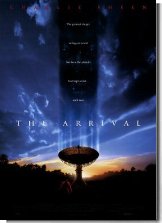
Whether you need some serious styling for your walls at home or work or are on the lookout to give someone a special gift they'll treasure forever, you support the work of Saturday Night Uforia whenever you shop for great posters from AllPosters.com from any link at this site -- any, each, and every time you start your shopping from here. You still get the same great deal as your friends and family, but a little will be sent back our way as a thank you from AllPosters.com. And you'll have the extra satisfaction of directly supporting the work of Saturday Night Uforia while treating yourself or friends to something special... like any of these great sci-fi movie posters (you can even have them mounted, laminated, or framed). Just click on the pic for a larger version...
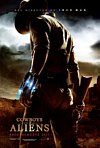






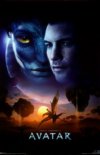

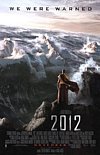
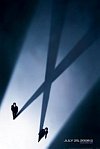
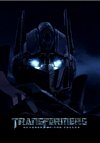

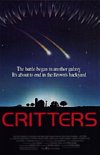
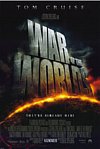


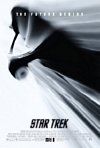



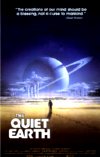

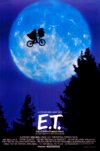
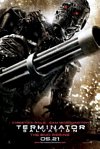

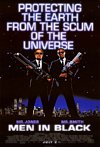
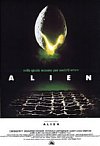






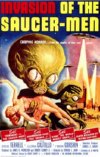
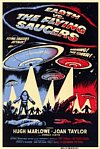





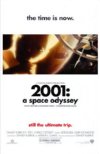
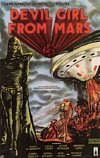

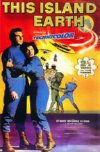
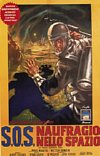

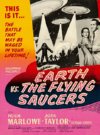

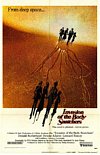
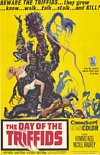
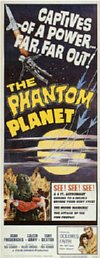

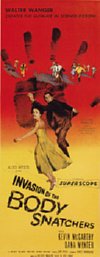



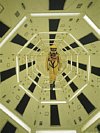



|





